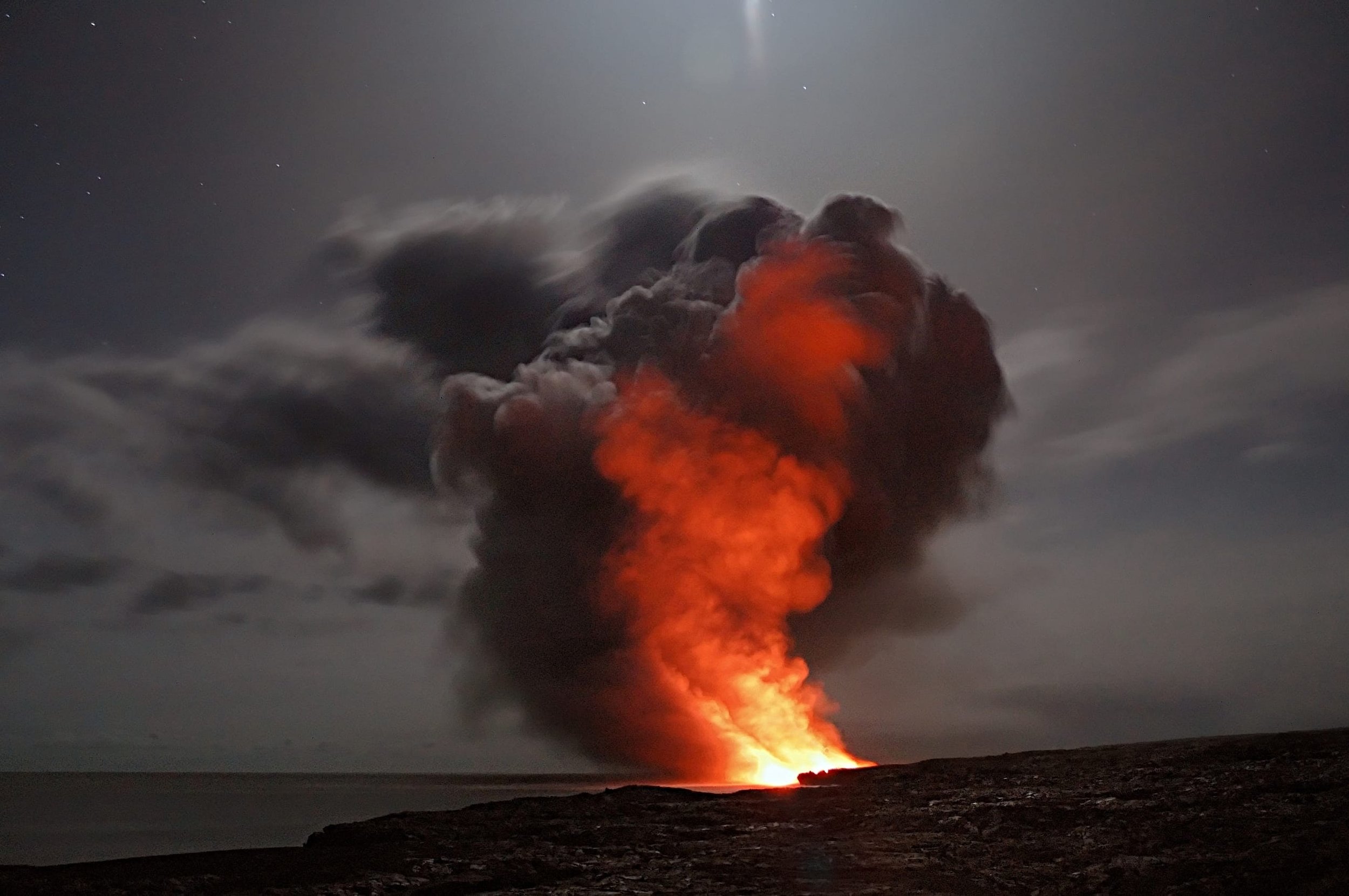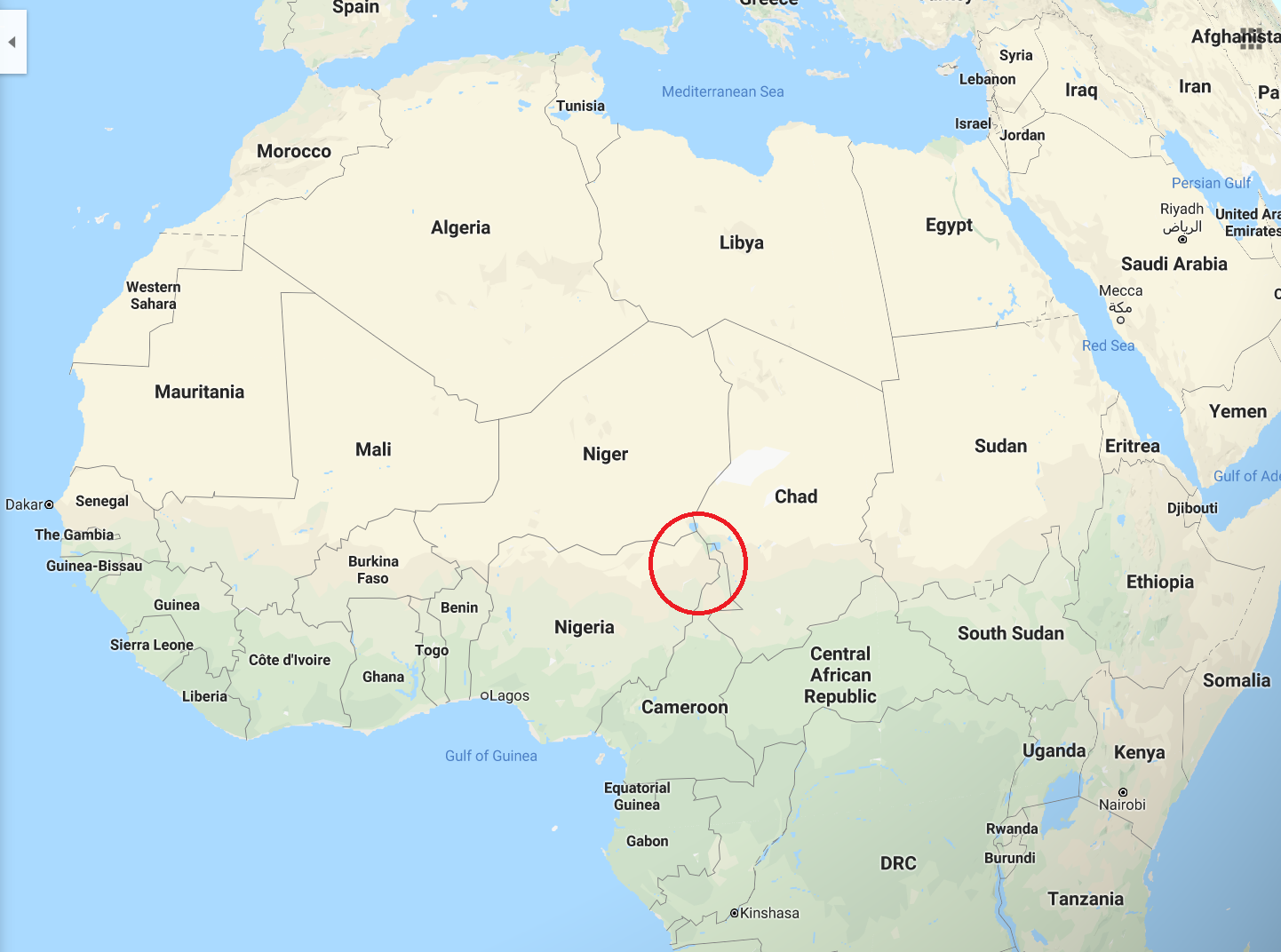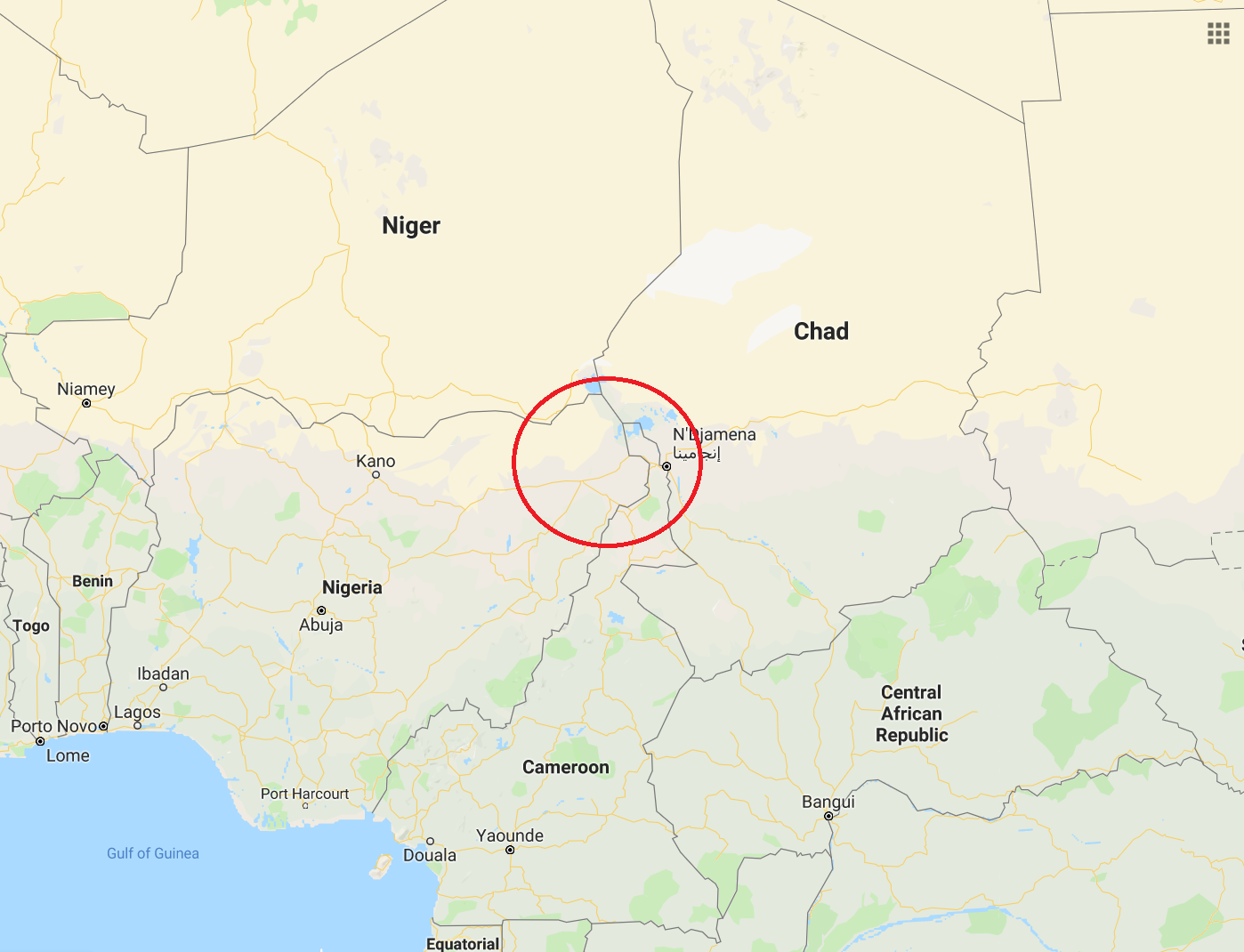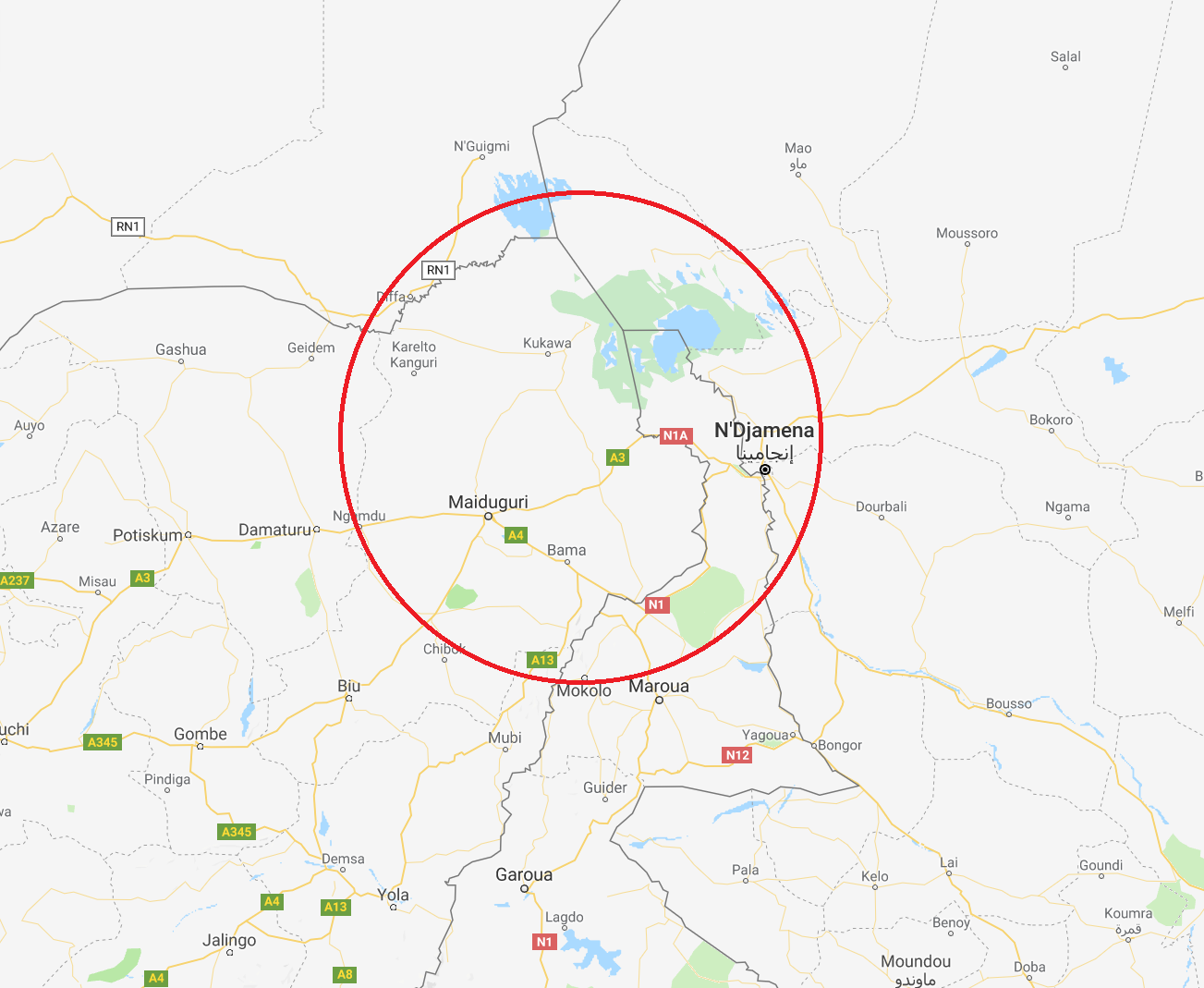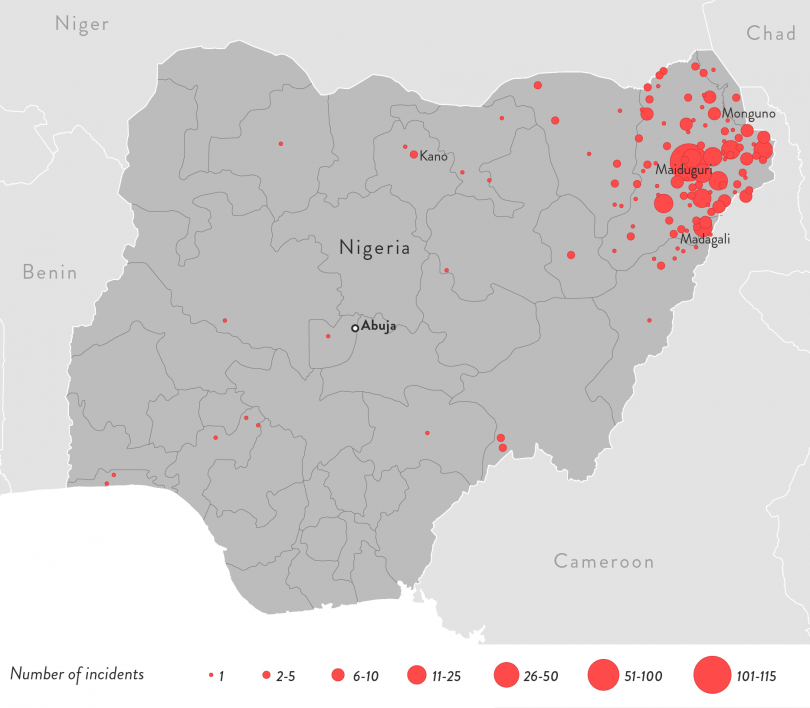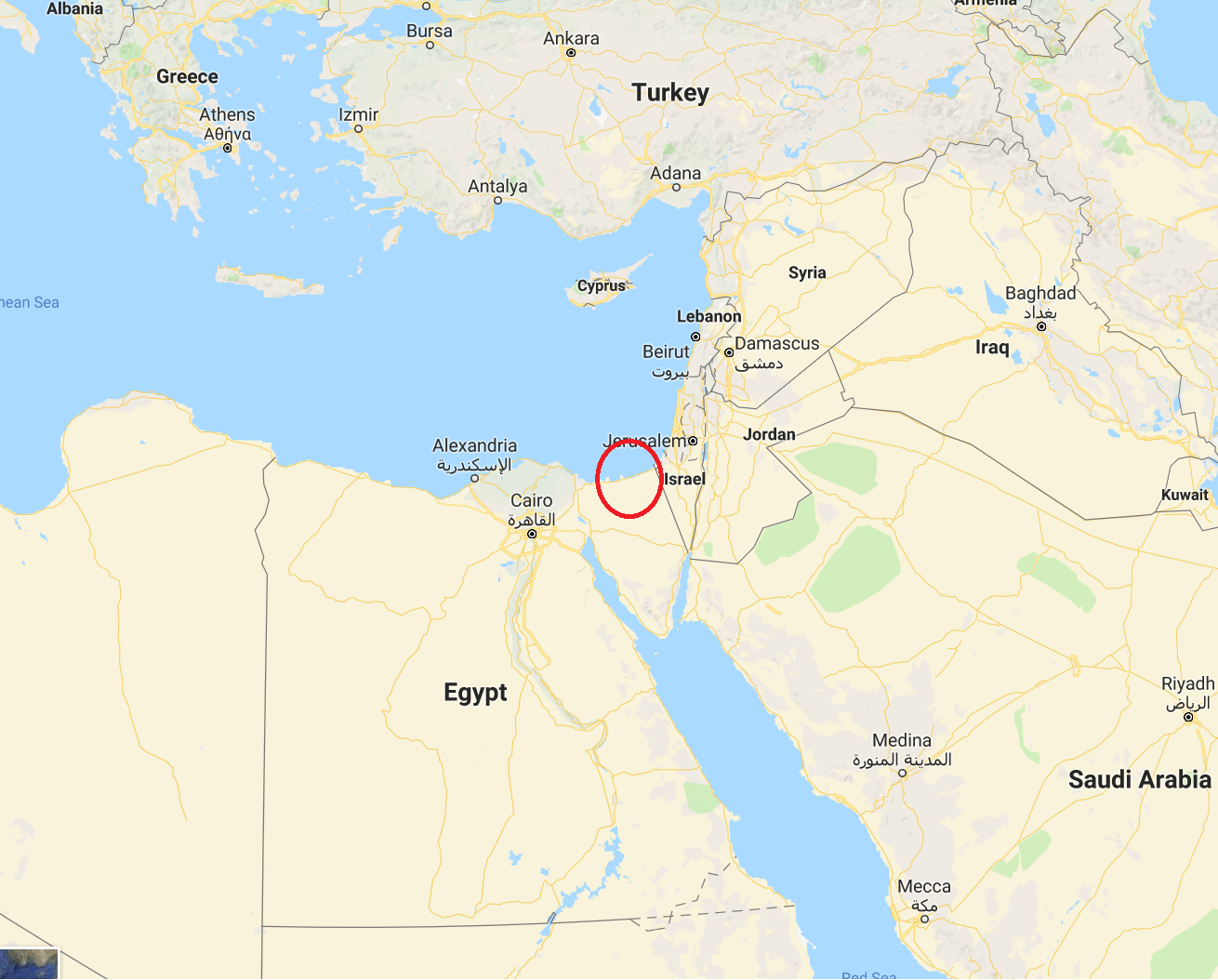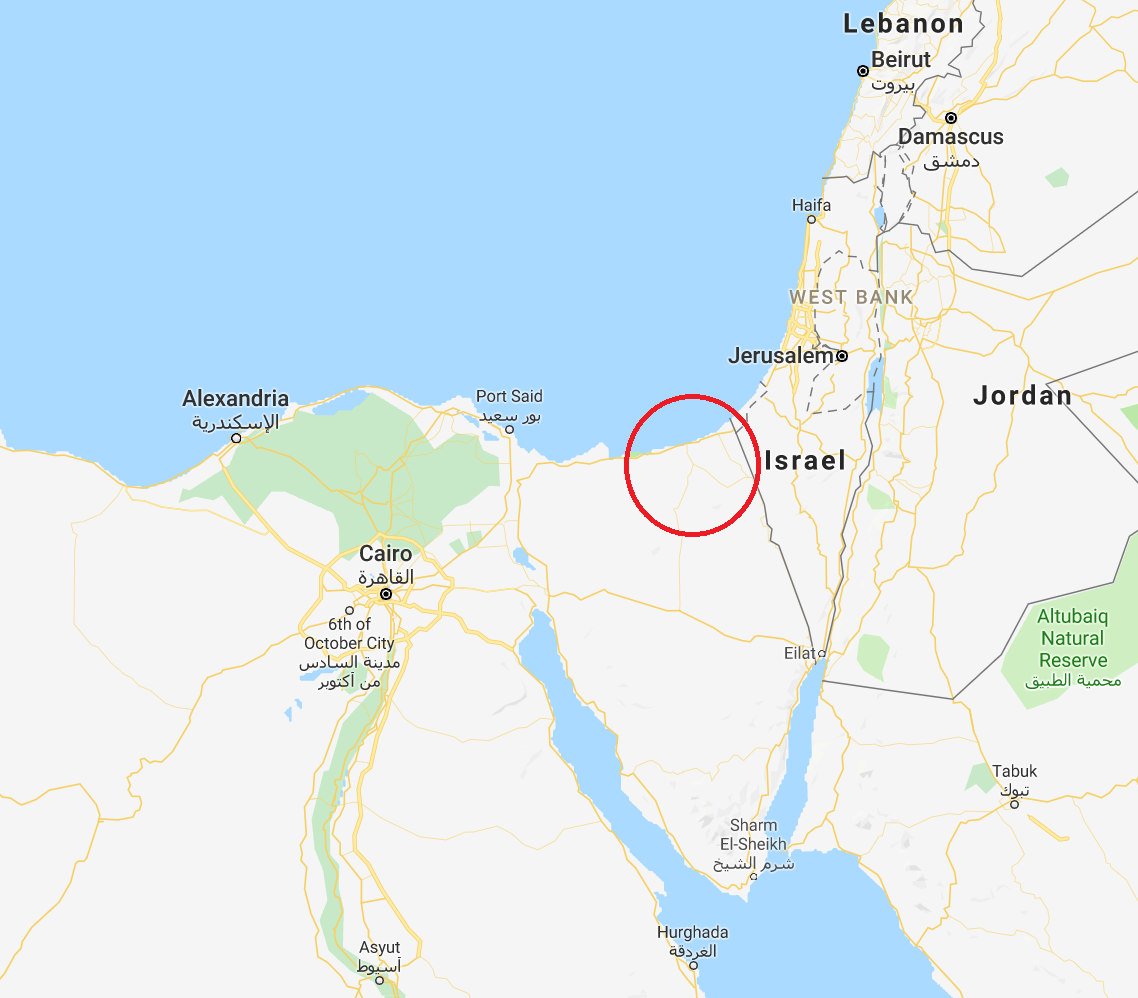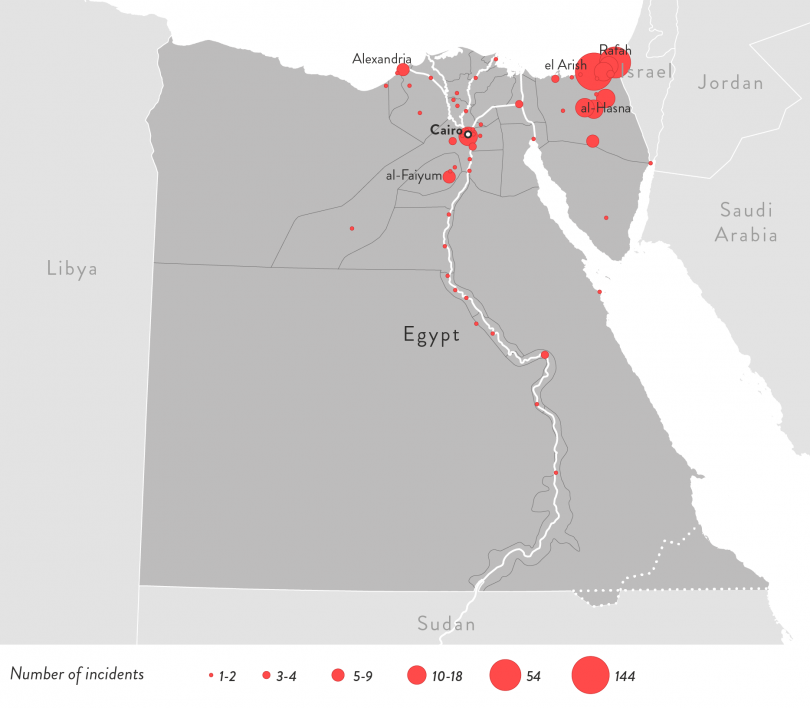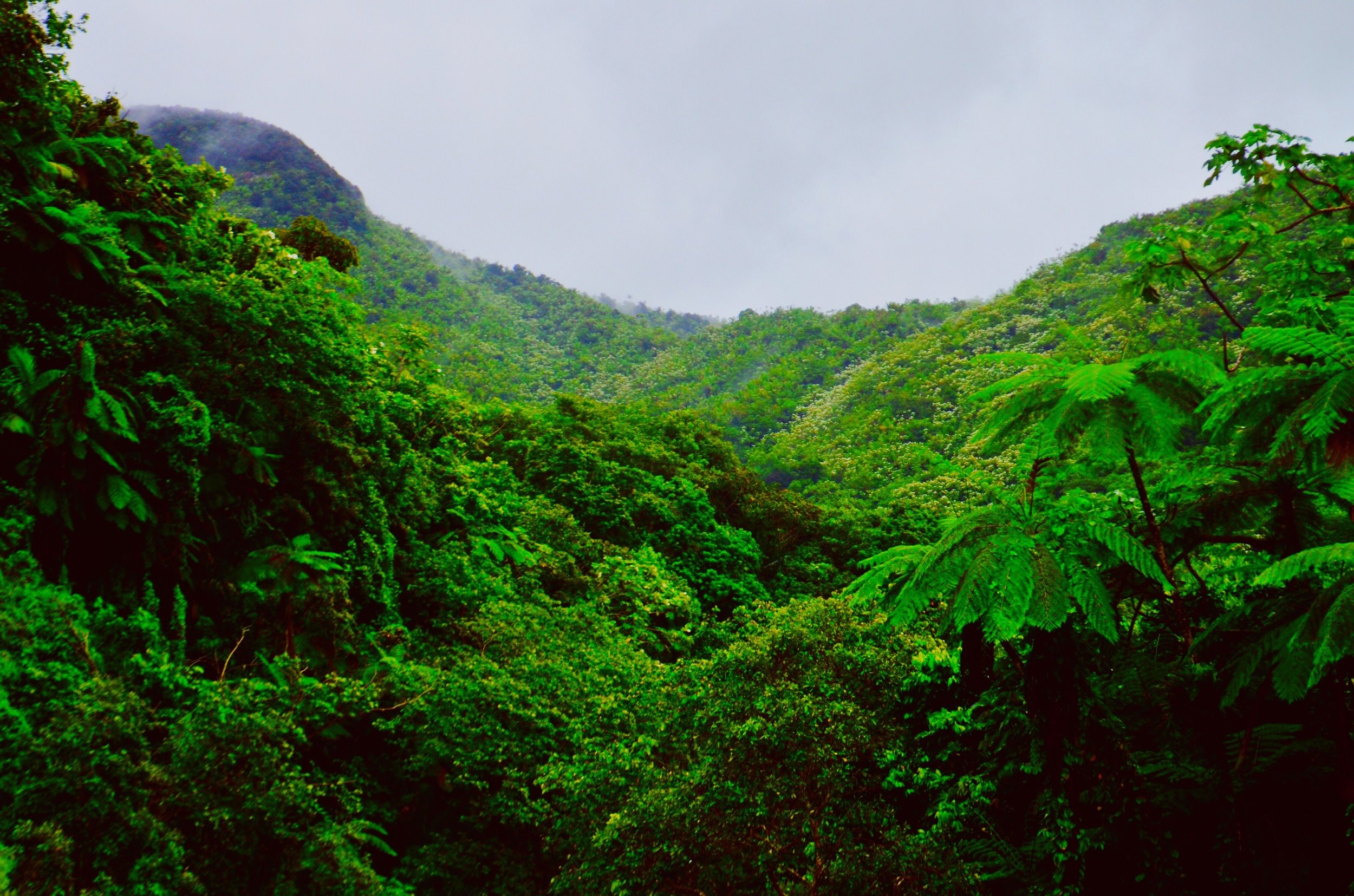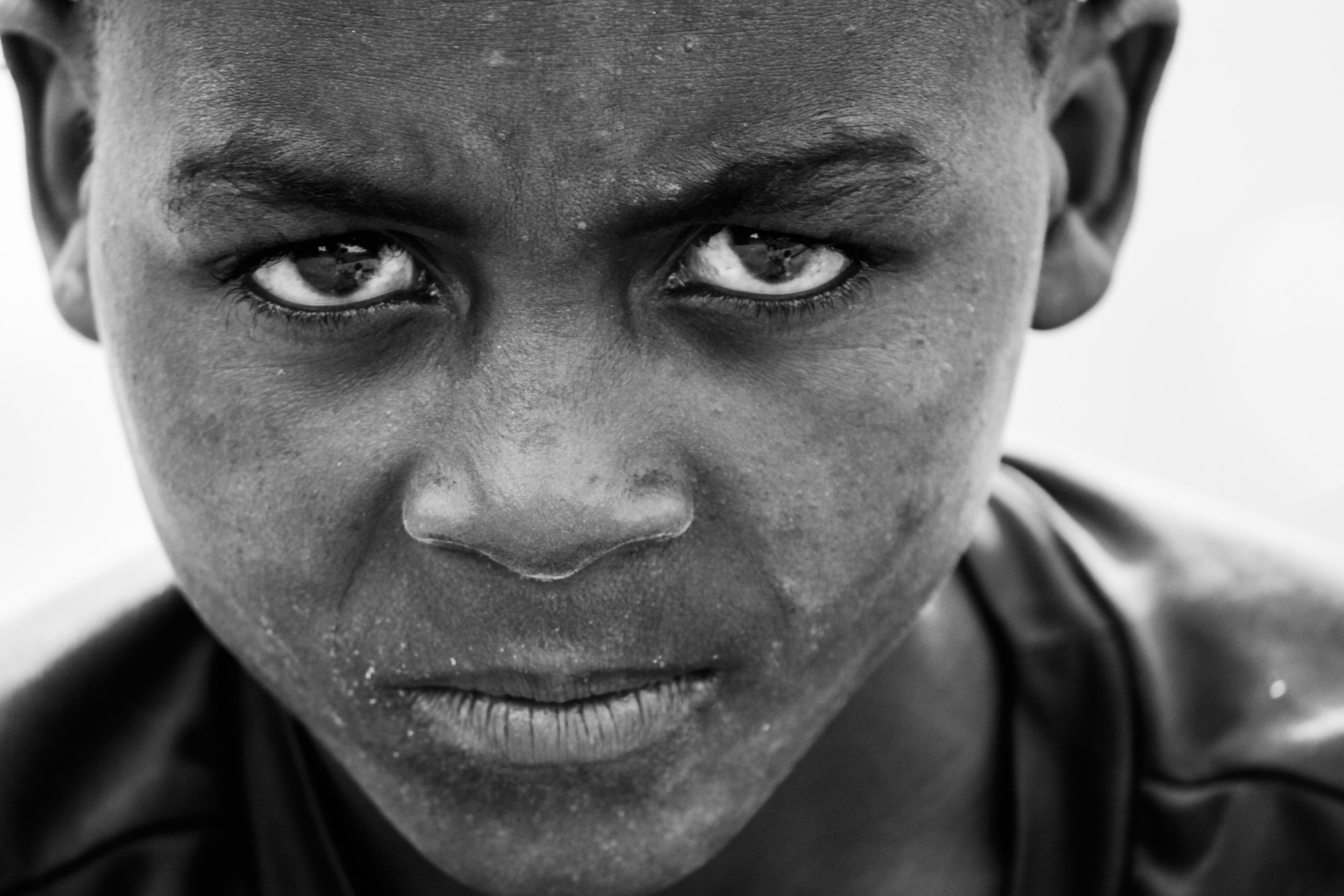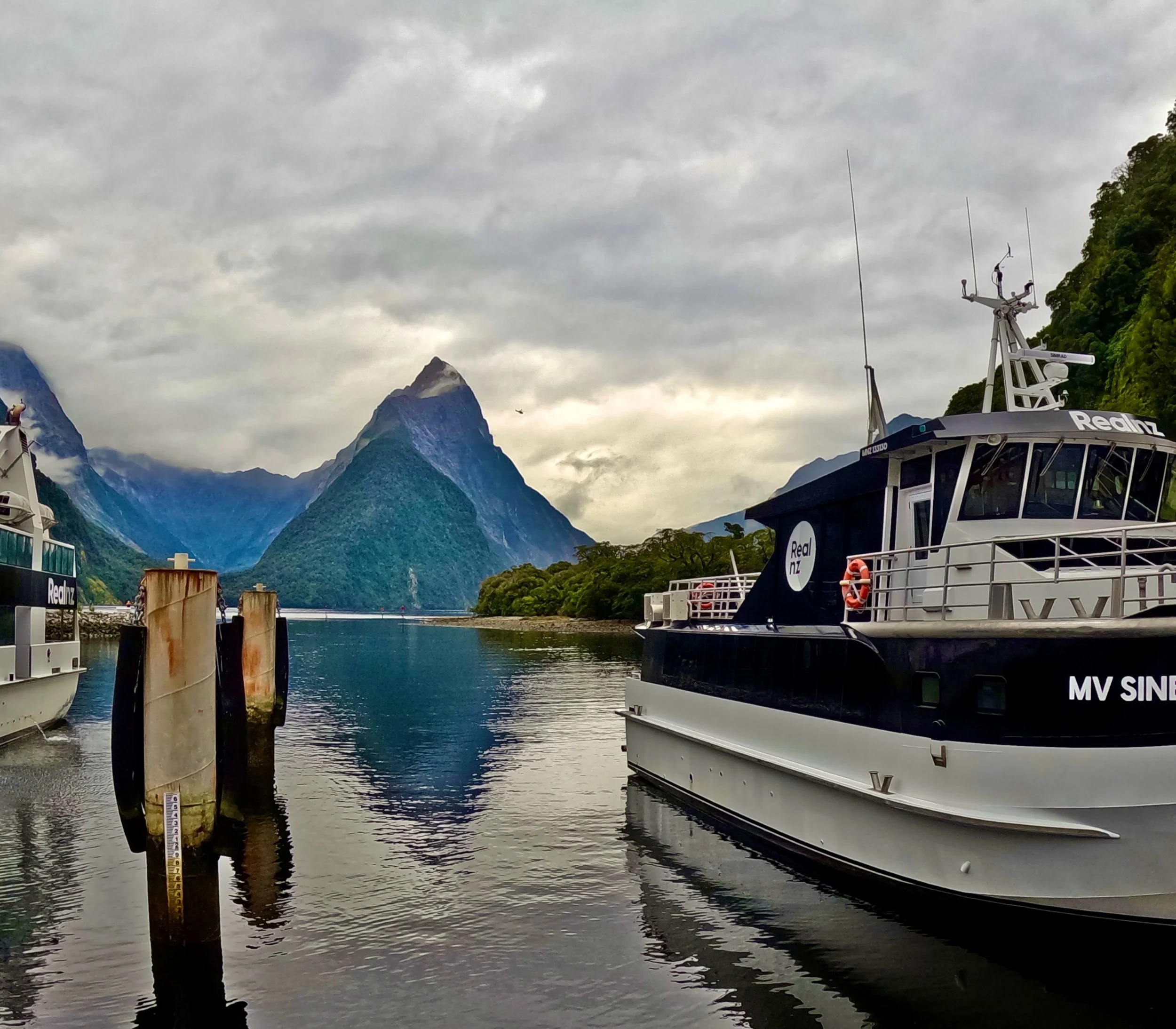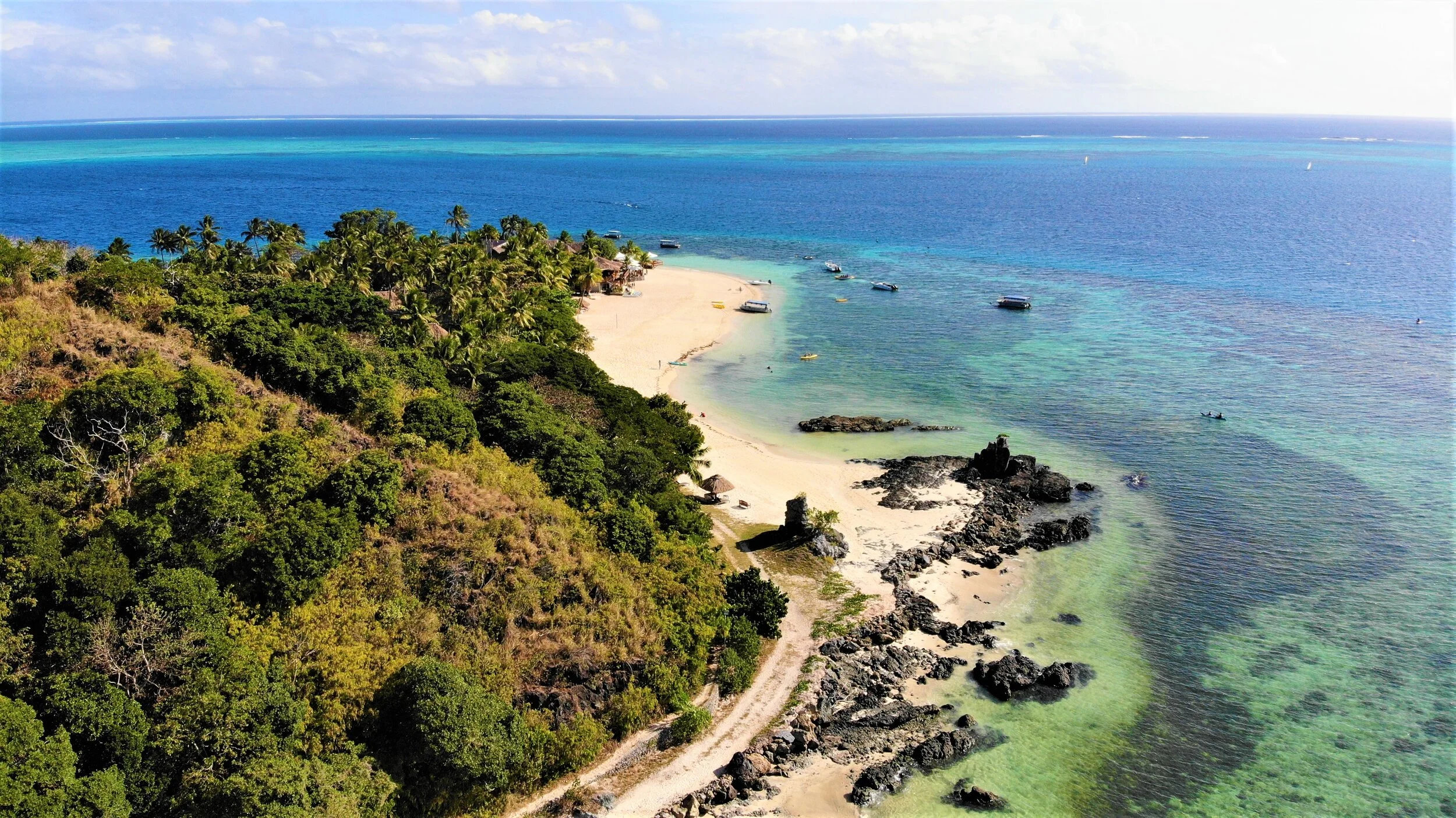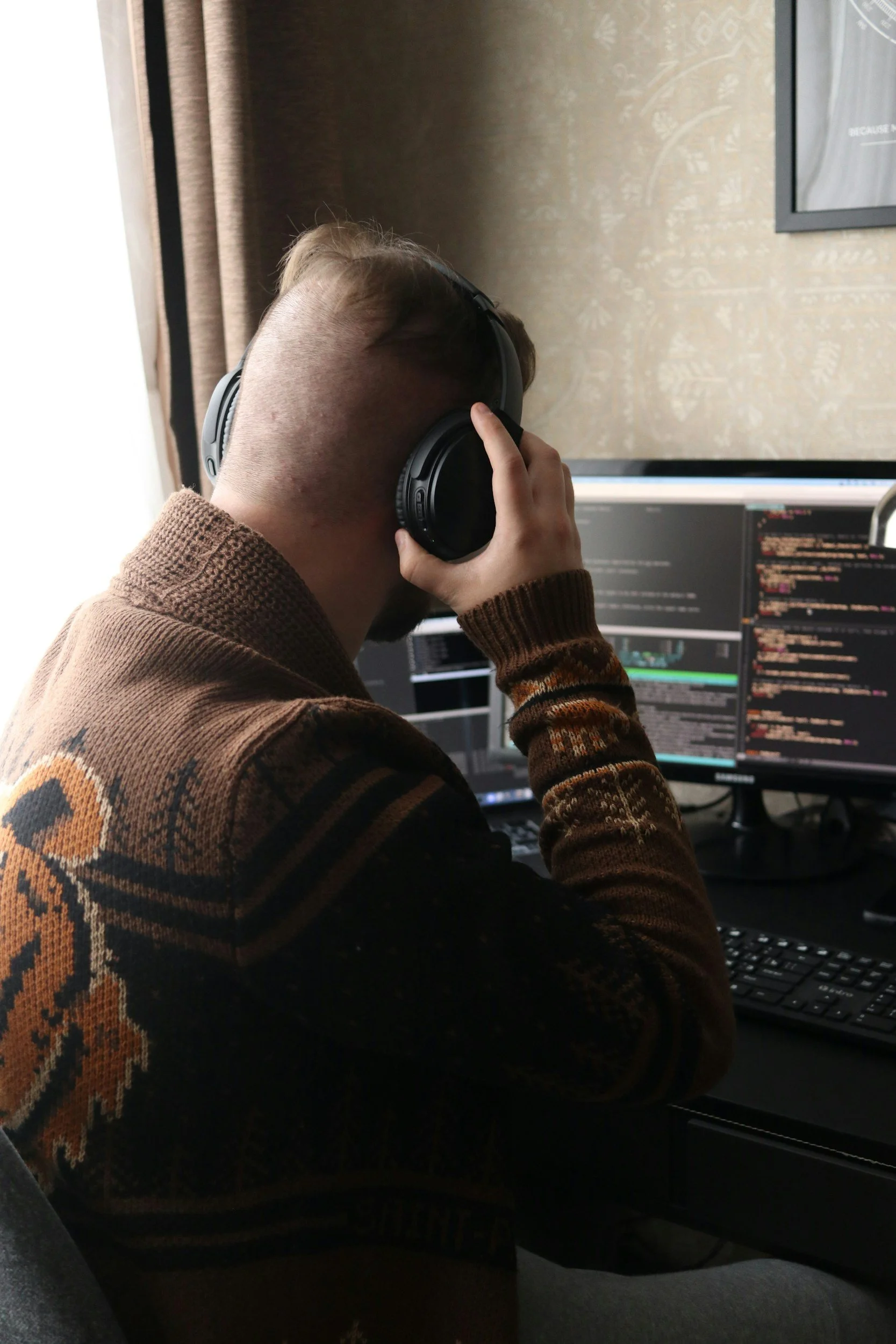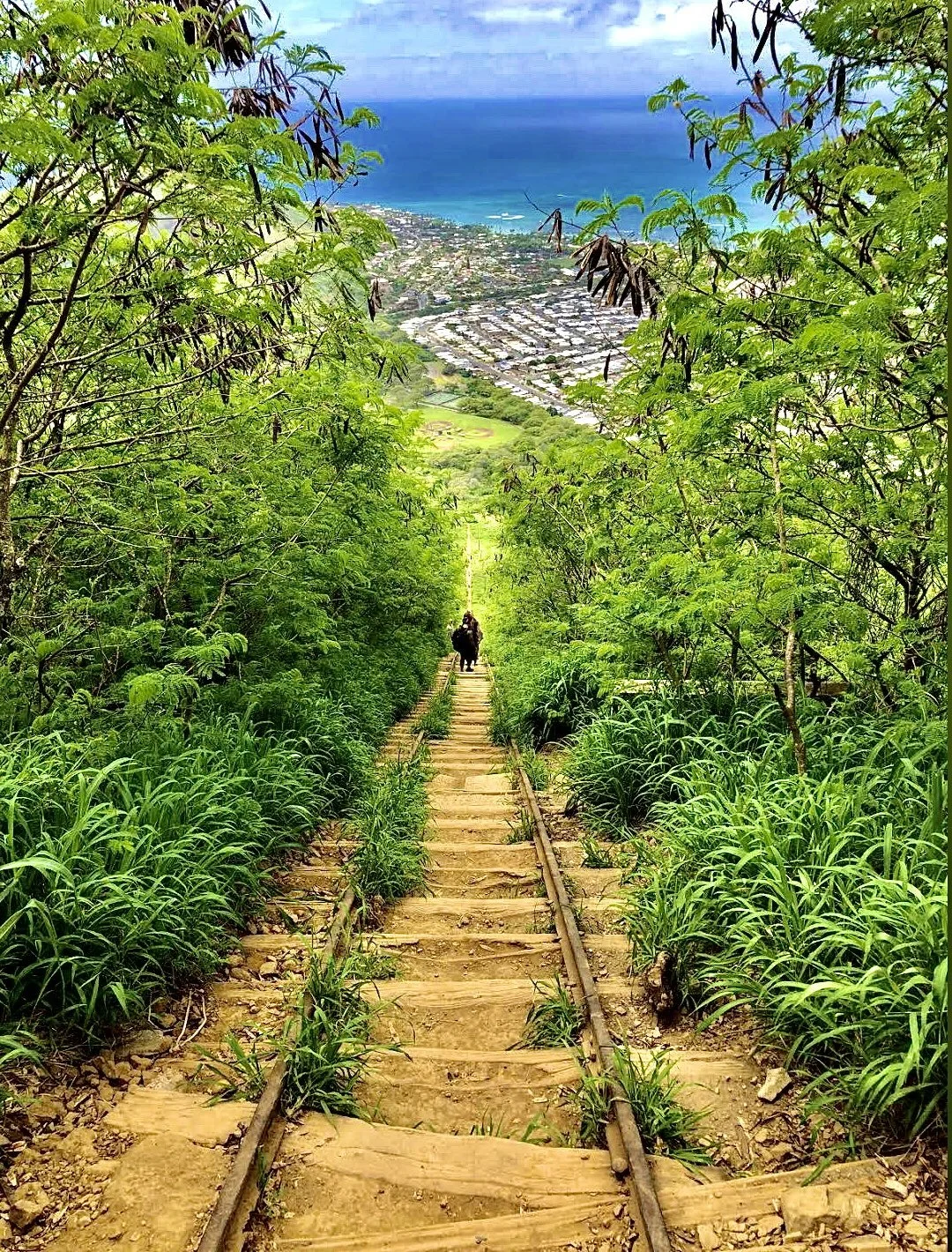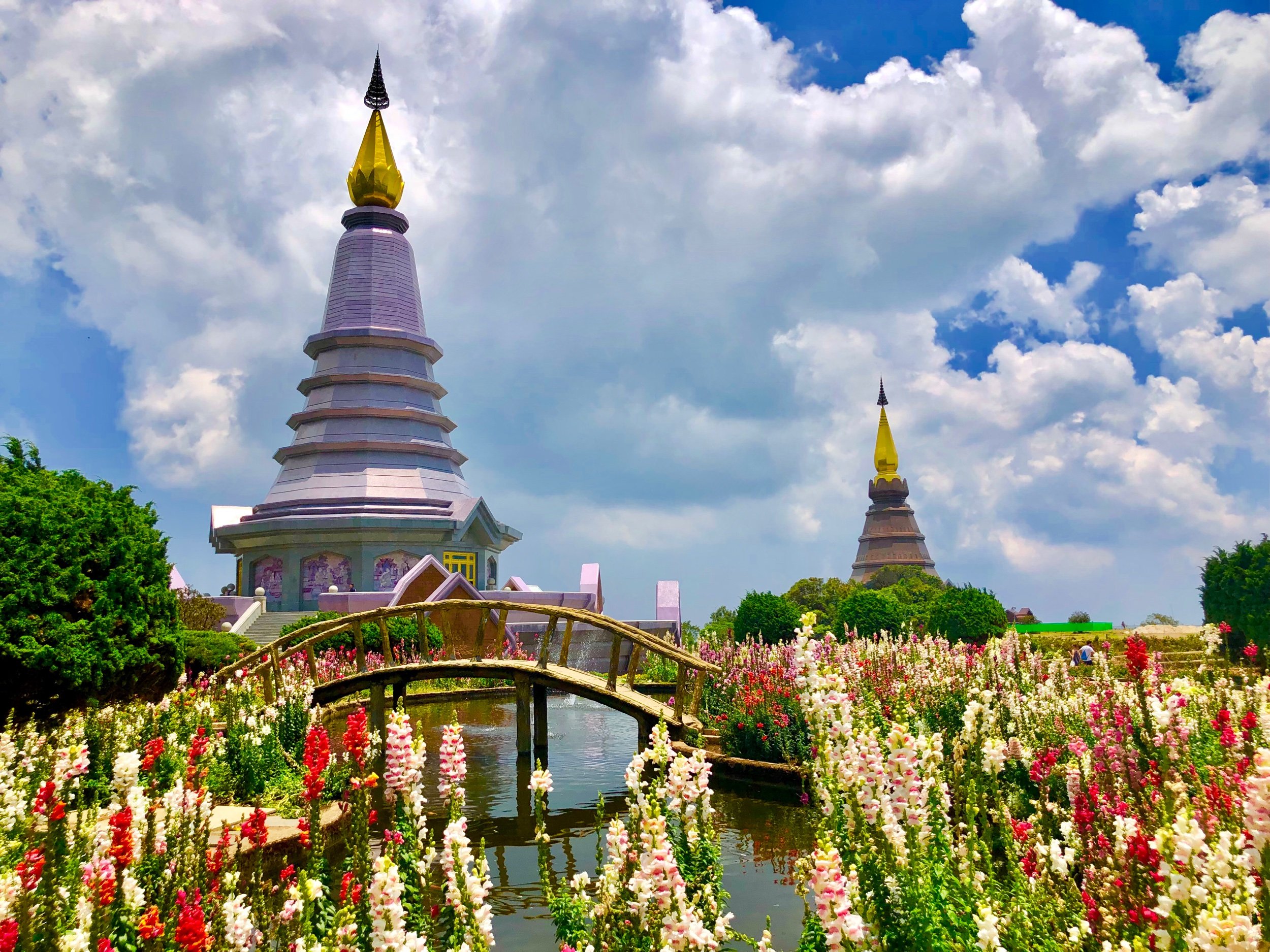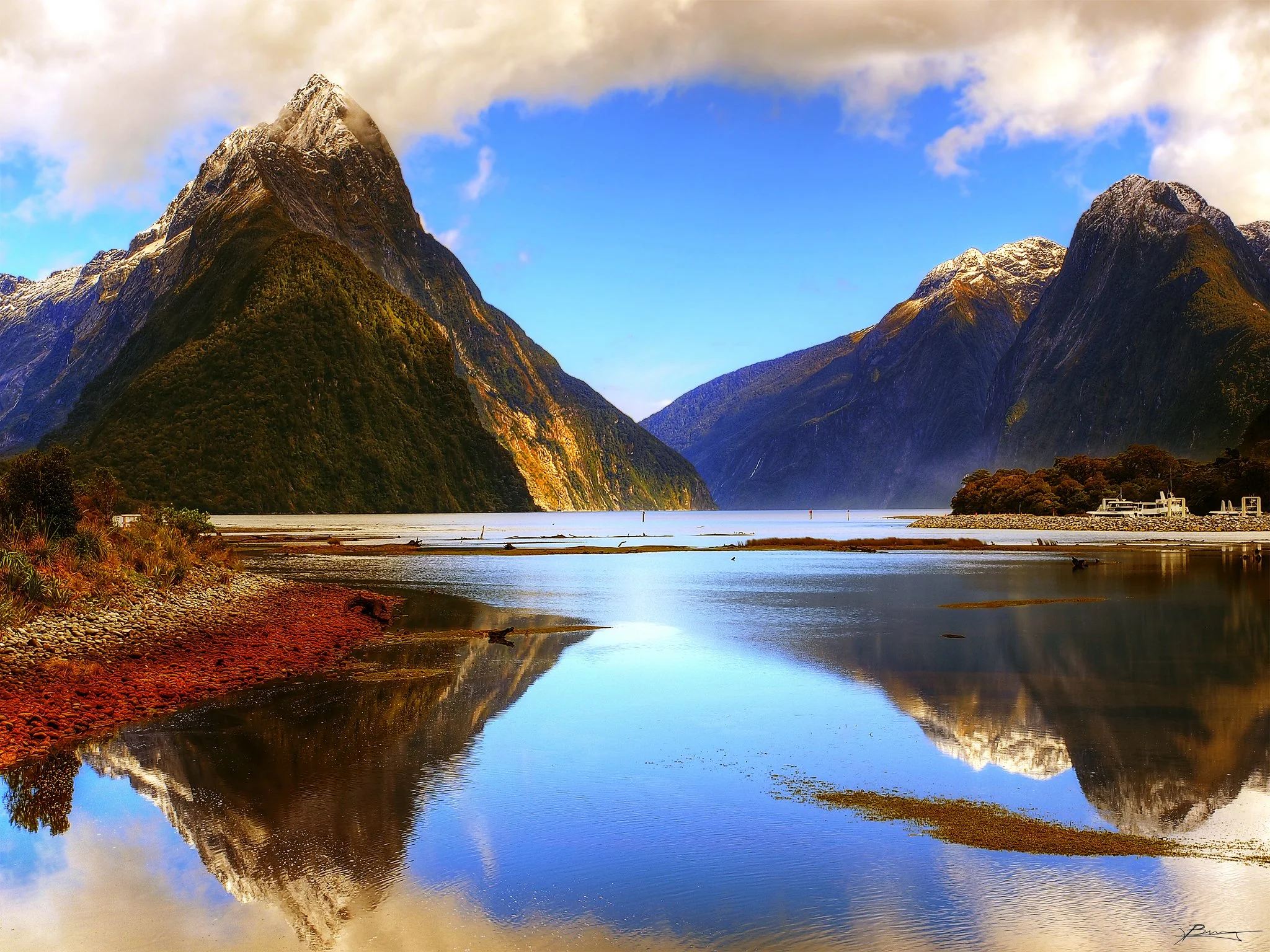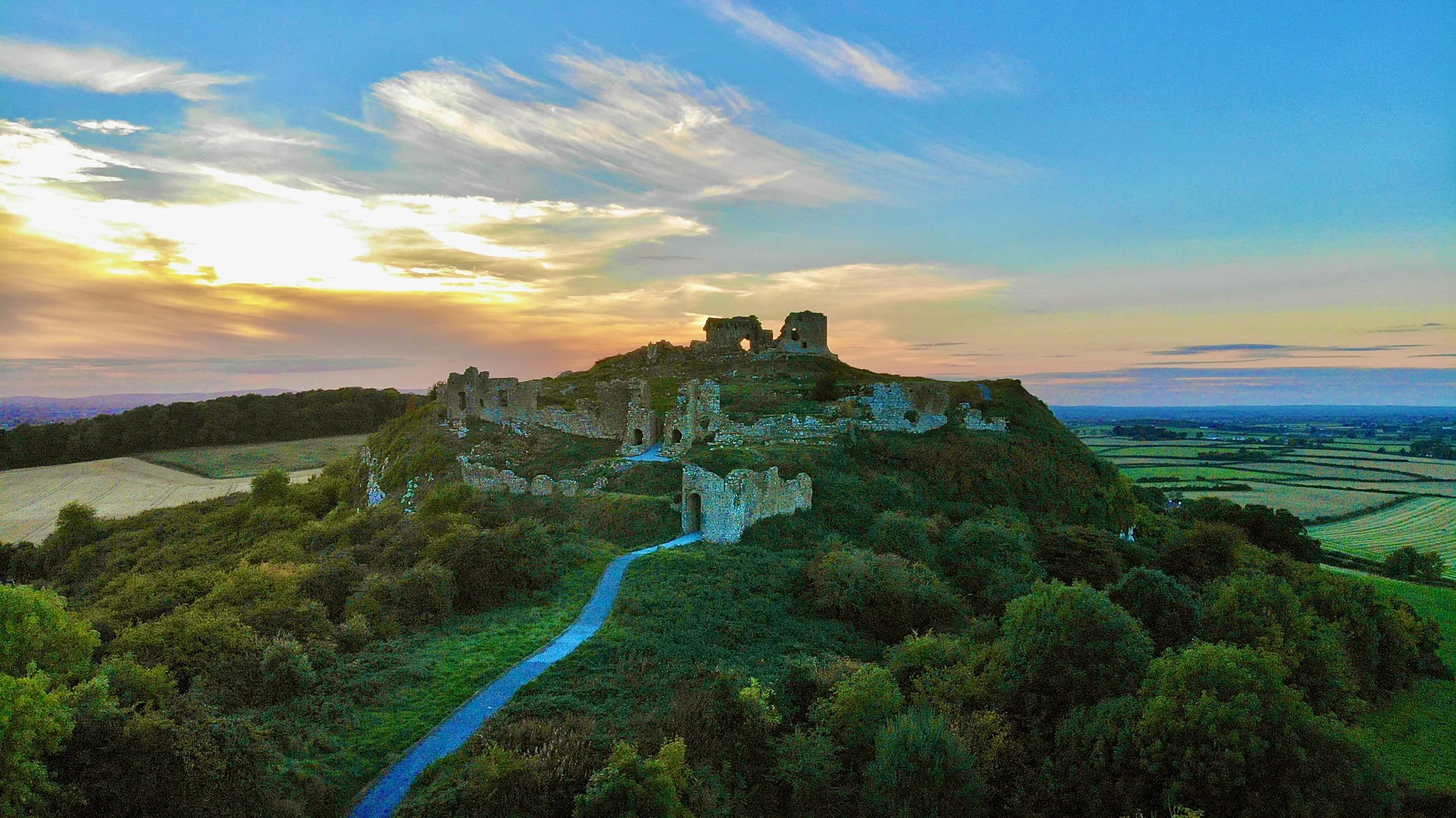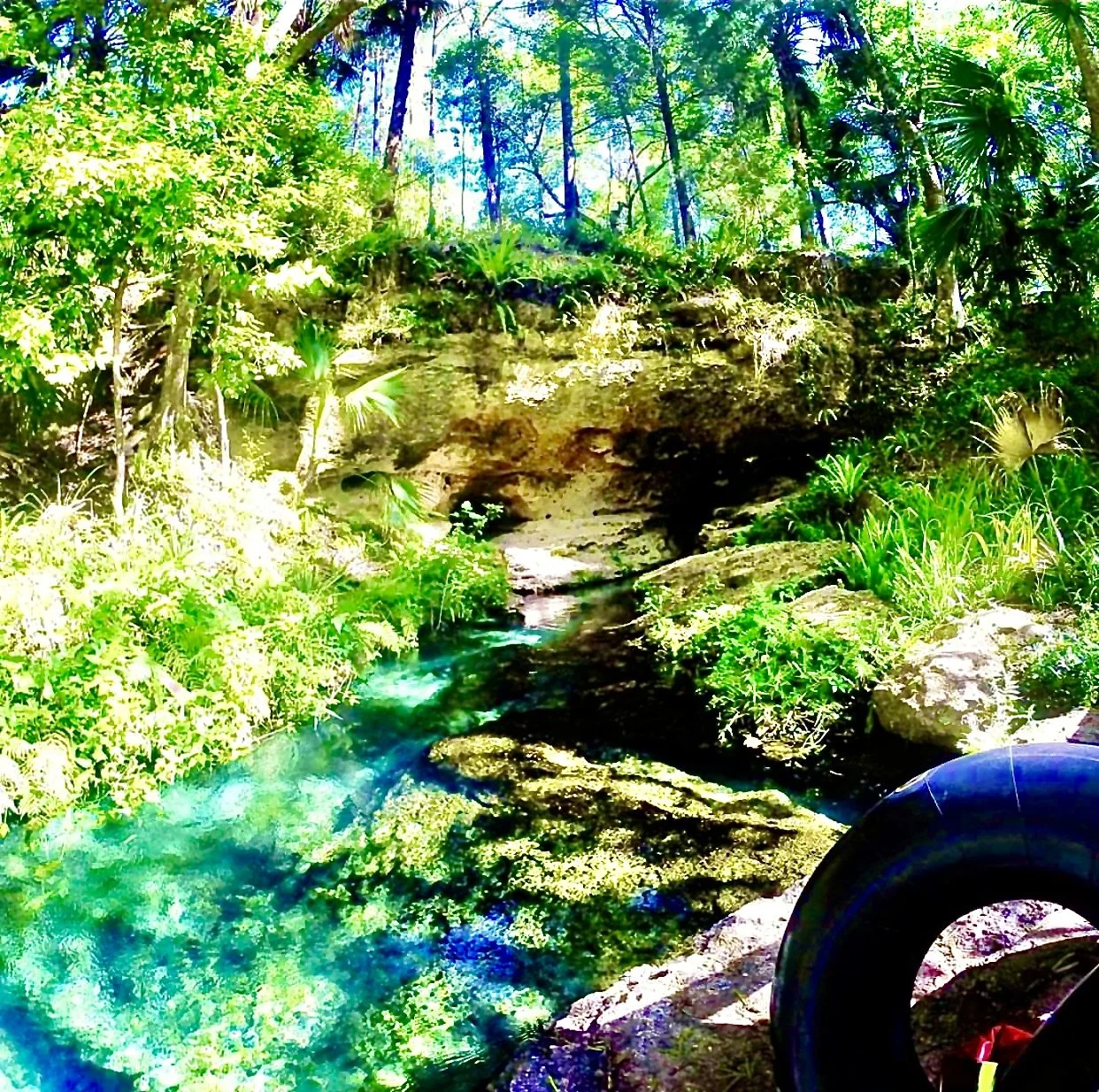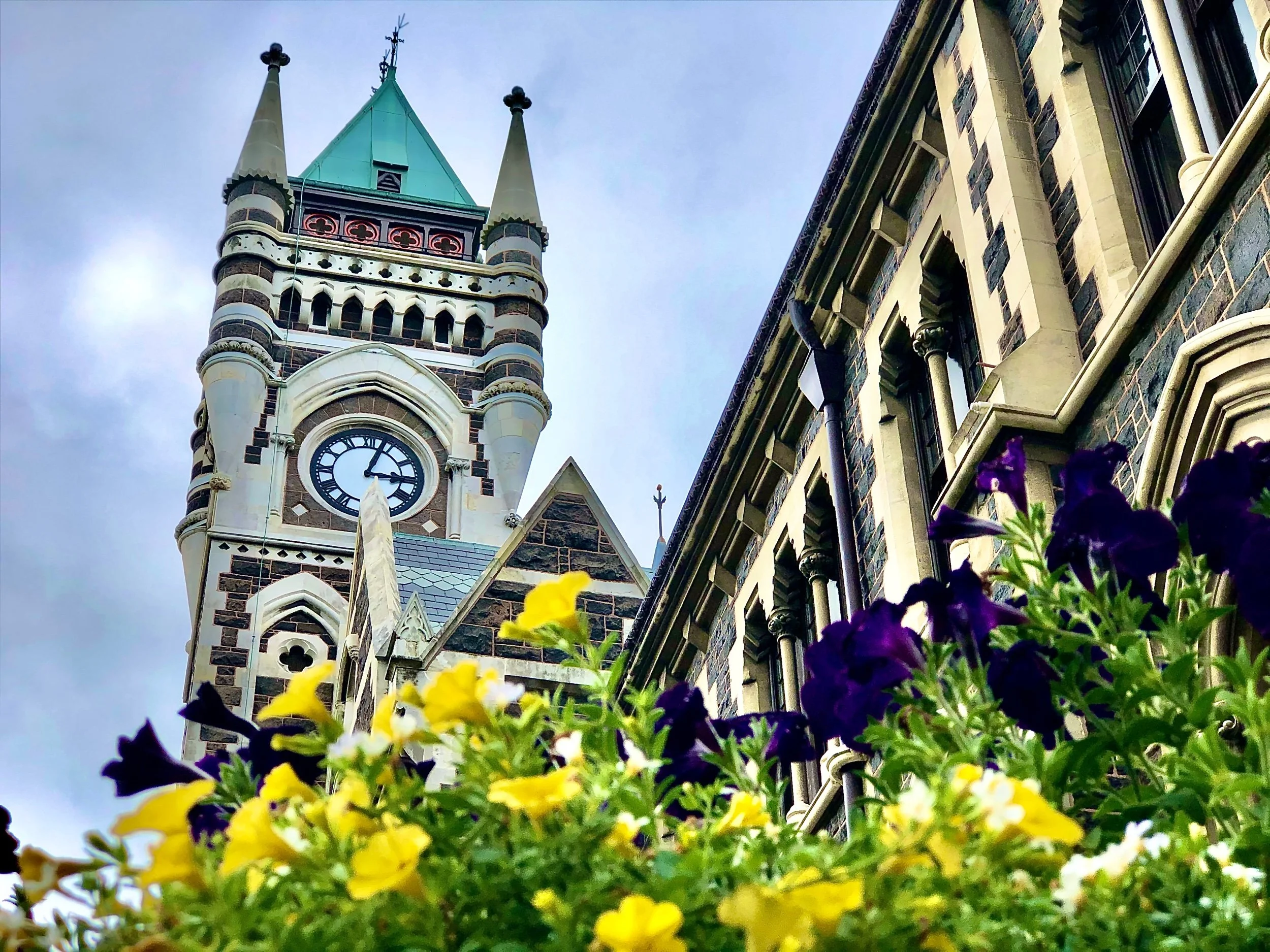The Most Dangerous Places in the World for Travel - Dangerous Places for Tourists
It was easier to determine what “The Most Dangerous Places in the World for Travel” were twenty years ago, before “global terrorism”. The world seems like a completely different place today with headlines like:
“Missing British backpacker found dead in Guatemala”
“Canadian found dead in Burkina Faso after kidnapping”
“Fifteen men charged over beheadings of female hikers in Morocco”,
This list takes into account these facts: Murder Rates, Kidnapping Rates, and Terrorist Rates. The areas were investigated and chosen if they were on the top of either of those lists.
Even if a country is listed, this article explains which *specific areas or regions* that are dangerous. Please don’t assume that the entire country is dangerous. Also, just because they are the most dangerous regions or areas, it doesn't mean that you can't travel to them and it also doesn't mean that they should be completely avoided.
We had our baby in South Africa, which we don’t really consider to be dangerous, but it did make this list due to high murder rates.
Perhaps it would be wise to take caution in the particular areas of the countries listed. There are some very amazing places that you can see in these regions, and we have listed them here for you. Also, you may want to consider that if these areas are at the top of the lists - and you disagree that they are dangerous - then perhaps the world isn't so bad. But they are currently on the top of those lists.
How would you determine the most dangerous countries?
What are some that would be on your list?
Let us know in the comments section at the bottom of the article.
Choosing a “Self-Guided Tour” in a Dangerous Country
In 2017, violent extremism struck 66 countries, claimed the lives of at least 84,023 people, and its grip reached every corner of the world. Extremist ideology is the key driver of this violence, but unique social, political and economic contexts also affect the directions extremists take.
Extremism is primarily focused on extreme religious ideologies, whether that means Islamic Extremism, Christian Extremism, Buddhist Extremism, etc. It exists in just about every single religion in some form, but always concludes with ANY ACCEPTABLE AMOUNT OF VIOLENCE OR DEATH AS A CONCLUSION to uphold a religious belief.
Ten states together experienced 97 per cent of all violent extremism fatalities globally: Syria, Iraq, Afghanistan, Somalia, Nigeria, Yemen, Egypt, Pakistan, Libya and Mali.
Also in 2017, global murders claimed the lives of at least 393,157 people, but a number of countries didn’t even have a single homicide. Not Mexico though. A recent headline reads: “Mexico: homicides up 16% in 2018, breaking own records for violence”.
Ten states accounted for 61 per cent of all intentional homicides: Brazil, India, Mexico, South Africa, Nigeria, Venezuela, United States, Russia, Colombia, and the Philippines. Additionally, 3 states had at least 50 murders per 100,000 people: El Salvador (83!), Honduras, and Venezuela.
If these are the types of places you intend to travel to, consider reading:
“Robert Young Pelton's The World's Most Dangerous Places: 5th Edition”
“Dangerous Territory: My Misguided Quest to Save the World”.
Or check out the article: “What You Need to Know About Traveling to Dangerous Places” by the Muse.
Prior military service experience and defensive training certainly will help keep you safer in these less-traveled to destinations.
If you have been to any of these locations, please let us know what your experience was like in the comments below.
The World’s Most Dangerous Places - by Region
Africa
Lake Chad Region: N.E. Nigeria, W. Chad, N. Cameroon
The Sinai near Gaza: N.E. Sinai of Egypt
Notable Mentions: Burkina Faso & Mali, D.R. Congo, Sudan, Ethiopia, Somalia, Lesotho & South Africa
Middle East
Northwest, West, and Central Syria & the Deir ez-Zor - A country in the midst of the worst civil war in modern history
The Northern Half of Iraq - violent extremism still is an issue here
The Kabul & Achin Areas of Afghanistan - This country still has some violent extremism, but may be mostly safe to travel through with a little caution
Notable Mentions: Yemen
Latin & South America
Western Mexico: Due to exceptionally high murder rates
The Northern Triangle: Guatemala, Honduras, and El Salvador - Extremely high murder rates
Caracas, Venezuela - a country in chaos
Alagoas, Brazil - high murder rates and crime
Notable Mentions: Colombia, Haiti (not nearly as dangerous as they once were)
Asia
Mindanao, the Southern Philippines - Pirates abound - murders and kidnappings
Notable Mentions: Southern Thailand, India, Pakistan
North America & the Caribbean
United States: With 17,250 homicides in 2016 and 5.35 in 100,000 being murdered, it was hard to leave the USA off of this list. So, here are “The Most Dangerous U.S. Neighborhoods of 2018”, the “25 most dangerous cities in America”, and “The Most Dangerous Metropolitan Areas to Live in the U.S.” The other countries listed in North America have almost no murders in comparison: Canada (611), Bermuda (8), Greenland (3), and Saint Pierre and Miquelon (1).
Europe
Russia: With 15,561 homicides in 2016 and 10.82 in 100,000 being murdered, we had to include Russia on this list as well. The only other European country that came close was Ukraine with 2,845 murders at a rate of 6.34 murders per 100,000. No other country in Europe had even 1,000 murders, but the rest of Europe (including Ukraine, but not Russia) had a combined total of 9,871 murders (about 43% less murders than in the United States, and 36% less than in Russia).
AFRICA
Lake Chad Region
Northeastern Nigeria / Western Chad / Far North Cameroon
Why this Region is Dangerous
Three extremist groups, Boko Haram, al-Qaeda, and Isis West Africa, all attack heavily populated areas like churches, schools, restaurants, hotels, and entertainment venues here. This region remains one of the deadliest in sub-Saharan Africa for extremist violence. In the local Hausa dialect, Boko Haram means "Western Education is Forbidden". The homicide rate in Nigeria is 9.85 and there were 17,843 murders here in 2015 - the latest reported figure.
The groups’ revenue comes from oil production and smuggling, taxes, ransoms from kidnappings, looting towns, bank robberies, selling stolen artifacts, extortion and controlling crops. With their estimated annual revenue of $10 million, they boast over 1,800 kidnappings every year, with 71 percent directed at civilians in the Lake Chad Basin specifically (“more focused on civilians than that of any other extremist group in 2017”).
Photo by Dazzle Jam from Pexels
Potential Volunteer Missions
Boko Haram abducted 276 girls from a school in Chibok on April 14, 2014 and took them into the Sambisa Forest. A few have escaped over the years to tell the story. After they were kidnapped, they spent a few weeks in a detention camp in a cave, were then handed over to Boko Haram fighters as wives, given lessons on detonating bombs, and told that if they died fighting [the extremist version of] Allah's cause they would go to paradise. So many girls and women are still in the forest [Kindzeka, 2016].
At least 2,000 women and children have been taken since the beginning of 2014, many of them co-opted into battle or sexual slavery [Amnesty International]. On March 8, 2018, Boko Haram abducted another 110 schoolgirls from Dapchi, Nigeria. This has allowed Boko Haram to deploy suicide bombers at a greater rate per attack than any other extremist organisation [Global Extremism Monitor, 2017]. In 2017 alone, 240 individual suicide bombers had been used in Nigeria alone. More than 57 per cent of these were female. The group’s unpredictable nature and use of tactics of evasion have enabled a resurgence in the group’s violence and fight for an Islamic state in Nigeria.
You can help out by donating through Save the Children or Aid for Africa. You can even Volunteer with Go Overseas.
If you’re looking into traveling here, we recommend checking out the “Nigeria - Culture Smart!: The Essential Guide to Customs & Culture” book on Amazon.
Unique Places You Can See in this Region
Sambisa Forest
Previously an African Game Reserve with bush elephants, leopards, lions, hyenas, baboons, monkeys of various species, and gazelle. Currently, a lush green pearl in the semi-desert environment that characterizes most parts of the upper region of northern Nigeria, including a number of Boko Haram extremists (and their captives). Additionally, “Nigeria's army wants to make Boko Haram's forest stronghold a tourism spot”
Yankari National Park
A large wildlife park featuring over 350 species of birds, one of the largest elephant populations in West Africa, and numerous warm springs. The Wikki Camp, features the Wikki Warm Spring (open 24 hours a day for swimming), safari excursions, and over 100 chalets for getting a night’s rest.
Gashaka-Gumti National Park
Covering 6,600 square kilometers and located in the mountainous northeast area of Nigeria which shares its border with Cameroon. Altitudes in the park reach up to 2400m in the Gangirwal area, which translates to “mountain of death”, and has the tallest mountain in Nigeria. There are no roads that cross this massive natural park, and trekking across Gangirwal alone takes about 7-10 days.
Chad Basin National Park
The floodplain wetlands attract many varieties of birds and water animals The desert area is home to rare desert wildlife like giraffe, red fronted gazelle, jackals, panta monkeys, porcupine, spotted hyena, warthog, dorcas gazelle, etc. This is not the safest place, but you can follow this guide to staying safe when travelling in the North.
Lake Chad - The Disappearing Lake
Historically ranked as one of the largest freshwater lakes in Africa and one of the most important agricultural heritage sites in the world, providing a lifeline to nearly 30 million people in four countries — Nigeria, Cameroon, Chad and Niger. The Central African cheetah, the striped hyena and the caracal used to live at the lake. Now, vultures feast on dead cows as drought and desertification take their toll.
Waza National Park
“The most important wildlife park in the [country] of Cameroon”. Diverse wildlife including lions, elephants, giraffes, gazelles, ostriches, hyenas, antelopes, and several species of birds.
Musee National N’Djamena
Learn about the historical journey of Chad. All captions are in French. The skull of the Toumai Man, widely regarded by the Chadians as the world’s earliest human ancestor, is located upstairs. There are also other things to do in N’Djamena.
#2 Best Location: Northeastern Sinai
Northeastern Sinai of Egypt near the Gaza Strip
Why this Region is Dangerous
Extremism has plagued Egypt for over 70 years. The violent aspects of Egypt’s extremism problem have intensified recently, and 1,546 people died in 2017 because of it. Seventy-four per cent of the deaths were recorded in the Sinai Peninsula. This desolate terrain has become a breeding ground for militants, and much violence in the Middle East and North Africa can be traced back to this area.
Wilayat Sinai took credit for bombing a Russian Metrojet flight in October 2015 that killed all 224 people on board. Islamic State generally targets Coptic Christian churches and pilgrims but mostly avoids Muslim places of worship. However, in November of 2017, they attacked a mosque in the Sinai leaving more than 305 people dead - the deadliest in the history of the Sinai Peninsula. Egypt regularly utilizes their military to attack these extremists.
If you’re looking into traveling here, we recommend checking out the “Egypt - Culture Smart!: The Essential Guide to Customs & Culture” book on Amazon. Are you interested in exploring some of the areas in the Sinai? Check out the “15 Days Egypt, Jordan & Israel Christian Tour"!
Unique Places You Will See in this Region
El-Arish Bedouin Market
Nomads from all over Northern Sinai gather to exchange products, handicrafts, herbs, goats, chickens, onions, silver, beadwork, embroidered dresses, and many other goods every Thursday.
Arish & Sinai Heritage Museums
The Arish Museum has exhibits that span the full breadth of Egypt’s history, from Pharaonic right up through the Islamic era. The Sinai Heritage Museum is dedicated to the culture of the nomads and Bedouins of Sinai.
Zaranik Protected Area & Baradwil Lake
Represents the major key routes of the immigrations of the birds around the world and it links the three continents of Africa, Asia, and Europe. These species include swans, ducks, herons, cattle egret, stork Mirza chicken, falcons, quail, buzzard, and sandpipers, gulls and terns, lunar, crow, hoopoe, and rubella.
The Ancient City of Pelusium & The Fortress of El Arish
These remains are scattered over a large area of land that was just recently excavated and is being studied. Pelusium was established as early as the Pharaonic civilization and was an important transit point for caravans going from Egypt to Syria and Palestine. witnessed its decline during the 7th century A.D. The Fortress (Citadel) was constructed in the ruling period of the Mamluks in Egypt. The fortress used to also have a freshwater well, a large garden, and shelters for soldiers.
Pharaoh's Island
This island is surrounded by coral reefs and features the El-Din Citadel.
Castle Zaman
The only medieval castle in Egypt, surrounded by mountains and the Red Sea.
Nuweibaa
The Red Sea without the tourist crowds. Camels and goats roam the streets and beaches. The Red Sea on one side and the Sinai Mountains on the other. Snorkeling and diving are good. You can sleep in huts. Nuweiba Port is the departure point for Jordan. You can see Saudi Arabia across the Red Sea.
Colored Canyon
A labyrinth of rocks up 40 meters high. A combination of sandstone and limestone appear in a variety of shades, colors and hues. Highlights are the Ain Khudra Oasis and the Arada Canyon - Double Canyon.
Serabit el-Khadim
The most important Pharaonic ruin in the Sinai. See the Temple of Hathor and get amazing views of the Tih Plateau.
Mount Sinai & Saint Catherine's Monastery
Believed to enshrine the burning bush from which God first revealed himself to Moses. One of the oldest continuously functioning monastic communities in the world.
Explore Egypt
Other things to see and do in Egypt
Notable Mentions
Photo by Pluetoe from Pexels
Burkina Faso / Mali Region
Why it’s Dangerous: Many attacks have been mounted on hotels, cafes, restaurants, and other places where people tend to gather. Some of the attacks were even conducted by terrorist groups from neighboring countries such as Mali and Niger.
Unique Places to See: Gouina Falls, The Great Mosque of Djenné, the Tomb of Askia, the Djinguereber Mosque in Timbuktu, Mount Hombori, Bobo-Dioulasso Grand Mosque, and Lake Tengrela.
The Northeast, East, and South-Central Areas of the Democratic Republic of Congo
Why it’s Dangerous: The North Kivu and Ituri provinces, along the Uganda and Rwanda boarders, are known to have confirmed and probable cases of Ebola outbreaks. In eastern DRC, and the three Kasai provinces in south-central DRC, armed conflict is very common. Armed robbery, armed home invasion, and assault, are rare compared to petty crime, but it is still not uncommon, and local police typically do not respond effectively to serious crime. Assailants may pose as police or security agents. Killing, rape, kidnapping, and pillaging, continue throughout the northeastern provinces of Bas-Uele and Haut-Uele (along the boarders of the Central African Republic and South Sudan), the entire eastern boarder (provinces of Ituri, North Kivu, South Kivu, and Tanganyika), and the south-central provinces of Haut Lomami and the Kasai’s (oriental, central, and occidental).
The safest areas to travel to are along the western boarder near the Republic of the Congo, the Northwestern boarder near the Central African Republic’s city of Bangui, and the northwest boarder of Angola.
More than five million people have been killed in the Democratic Republic of Congo (DRC) in the past 20 years. Children end up on the street from poverty, social issues, family breakups or deaths, and are vulnerable to exploitation and violence. Armed groups are still active in eastern Congo and are responsible for the killing of civilians, rapes and forced recruitment of children. Help by joining the Aid for Africa group.
Unique Places to See: Virunga National Park, Mount Nyiragongo, Mount Sabyinyo, Kahuzi-Biéga National Park, Garamba National Park, Mount Mikeno, Mount Kahuzi, Nyamuragira, Lola ya Bonobo, and Idjwi island.
Interested in exploring a little bit of the DRC? Check out the Lowland Gorillas trek in Kahuzi-Biega or the Nyiragongo volcano hike.
Darfur Area, Sudan
Why it’s Dangerous: Terrorist groups operating in the country have been forthcoming about their plans to target tourists, aid workers, and political visitors. There is a risk of bomb attacks, kidnappings, and violent assault, especially in Darfur.
Unique Places to See: Some of the most beautiful landscapes on the planet. Here, you’ll find the point at which the Blue and White Niles converge to create the longest river in the world. There are ancient ruins, historical markets, and entire settlements of pyramid structures.
Danakil Desert Area of Ethiopia & Eritrea
Why it’s Dangerous: Conflicts in Eritrea increase the risk of getting kidnapped. All foreign offices will advise you never to visit the Danakil Desert, mainly due to a border conflict with Eritrea and the risk of getting kidnapped.
Unique Places to See: The Danakil Desert, located in northeast Ethiopia, southern Eritrea, and northwestern Djibouti, is known as one of the most hostile, dangerous, and inhospitable places on Earth, but it is also one of the most strangely beautiful. The area is known for volcanoes and geysers that spit toxic gases and extreme heat, with daytime temperatures surpassing 50 °C (122 °F). Additionally, the Afar Depression Erta Ale volcano, in the Afar Region of Ethiopia, is one of the most dangerous volcanoes on the planet. Small earthquakes are constantly shaking the region, forming numerous deep chasms. This happens because Erta Ale contains two lava lakes in its summit crater. The amount of lava in them is constantly changing, causing the Earth’s surface to shake up and down.
Interested in an extraordinary trip through Ethiopia? Check out the amazing “Discover Ethiopia” trip!
Mogadishu Region - Southern Somalia
Why it’s Dangerous: Mostly controlled by militants making it one of the most dangerous places to live. The Al Shabaab militants once controlled most of the city. Constant strife due to clan and ethnic warfare.
The region has an elevated risk of kidnapping and terrorism. Piracy is a big problem here. Foreigners, particularly westerners, are easy targets. Kidnapping wealthy, white tourists creates an international furor, and the world gets to hear their demands.
Unique Places to See: The filming location of a scene from Black Hawk Down (crash site museum), The Tomb of the Unknown Soldier, Fakr ad-Din Mosque, Mogadishu Cathedral, Mosque of Islamic Solidarity, Kismayo National Park
Planning on heading here? Read “The World's Most Dangerous Place: Inside the Outlaw State of Somalia” before you go.
Activist Townships of Lesotho & South Africa
Why it’s Dangerous: Inadequate jobs and income in these countries, as well as limited water supplies, tends to lead to crime in desperation. Scams are popular in both Lesotho and South Africa. Lesotho makes this list because it’s murder rate is 41 per 100,000. South Africa makes this list because it’s murder rate is 34 per 100,000 - but also because 19,016 people were murdered in this country in 2016 (about equal to the United States). Tourists stand out as an alternative source of easy cash. In Lesotho, the stretch between Maseru's hub of hotels and the business district is notorious for robberies. In South Africa, the places with the highest incident of crime are primarily located in a wide range of townships.
Some “township tours” are aiming to change this stigma, though. Locals who live in some of these townships - and who want to make their communities better - have been making their townships more welcoming to tourists, who bring money into the area by buying locally made souvenirs and eating at authentic South African restaurants. Other South African’s recommend visiting these townships only with the tours, as there is a risk to vehicle theft and break-ins if you drive in yourself.
You can help the situation by setting up solar panels in these areas that can pull clean drinking water from the air. Training and employing people from the townships to help install them can help improve their communities and their personal livelihoods.
Unique Places to See: What an abundance of things to see! Start out by taking a few safaris in Kruger National Park and hike to the Three Rondavels Viewpoint in Blyde River Canyon, visit Constitution Hill and the Apartheid Museum in Jo’burg, drive the Garden Route and stop to see the majestic Cango Caves in Oudtshoorn, go swimming with Great White Sharks, then hike Table Mountain, boat to Robben Island, visit African penguins at Boulders beach, wonder in awe at Kirstenbosch Gardens, and explore the Cape of Good Hope in Cape Town.
Interested in visiting South Africa? Check out the “South Africa - Culture Smart!: the essential guide to customs & culture” book and consider the “South Africa & Swazi Quest”.
THE MIDDLE EAST
Northwest, West, and Central Syria & the Deir ez-Zor
Global Extremism Monitor 2017
Why this Region is Dangerous
In 2010, Syria had a homicide rate as low as 2.2 per 100,000 and only 463 murders throughout the entire country. It is hard to imagine that it is now in its eighth year of what is easily the deadliest civil war in modern history. Only aid workers, journalists, and political activists have been entering. Risks here involve kidnapping, assassination, car bombs, and anti-western aggression. Half of all civilian fatalities due to extremism - recorded globally and accounting for 11,741 deaths - were documented in Syria.
Syria is the country most affected by violent extremism. Twenty-nine violent extremist groups were actively engaged in the conflict in 2017, considerably more than in any other country. ISIS was the deadliest group in the country, launching 44 per cent of all extremist attacks. Strongholds have included Raqqa, Deir ez-Zor, Abu Kamal, and Homs. In 2017, ISIS deployed 326 suicide bombers and 365 landmines and improvised explosive devices (IEDs). Despite best efforts to stop ISIS fighters, reports estimate that between 1,000 and 2,000 of them remain, as well as up to 10,000 loyalists. The group “Hayat Tahrir al-Sham (HTS)” was nearly as bad as ISIS, launching 41 percent of the violent extremist attacks in 2017.
Potential Mission Considerations
You can help by donating to a charity, volunteering, or educating yourself and others. An estimated 2.1 million children in Syria are currently out of school and 6.2 million people are currently internally displaced.
Are you planning on visiting Syria? Pick up the “Syria - Culture Smart!: The Essential Guide to Customs & Culture” book to help you understand the customs and culture.
Unique Places You Will See in this Region
Deir Mar Musa al-Habashi
This ancient mountain monastery welcomes all manner of faith in an effort to keep Christians in Syria.
Palmyra
The mysterious lost empire of the Silk Road.
Krak des Chevaliers
The most famous ruins of the Crusaders' headquarters.
Sayyidah Zaynab Mosque
This ornate mosque is said to hold the remains of Muhammad's granddaughter beneath its dome of pure gold.
Damascus
Old Town, Hamedieh Souq, Ummayad Mosque, Azem Palace, Hanania Church and the National museum.
Ancient Aleppo
The Ancient Citadel, Grand Mosque, Al Faraj Gates and the Clock Tower
The Northern Half of Iraq
Global Extremism Monitor 2017
Why this Region is Dangerous
Iraq is synonymous with civil war, terrorism, and global conflict. It’s been the center of a global fight against terrorism for more than a decade. Kidnapping, bomb attacks, and armed robberies are common. It is reported that kidnappings reach 1,700 annually. This country has one of the highest kidnapping rates.
In 2017, there were a recorded 17,033 deaths in the country as a result of extremist violence and counter-measures. The ISIS military has begun to reconstitute itself as a violent insurgency again in 2018.
Unique Places You Will See in this Region
Ancient Babylon
Here we will see Taq Kasra – The largest unsupported arch in the world. The top is about 1 meter thick. It is the only remaining structure from the ancient city of Ctesiphon. Ishtar Gate – A replica of an inner gate to the ancient Babylon city. The gate was considered one of the original Seven Wonders of the World.
Hatra
First-century ruins. Many of the archaeological sites were looted by the Islamic State (IS), but the buildings remain largely intact.
Ziggurat Temple
We will visit a 4,000-year-old Ziggurat temple, one of the best-preserved structures from the Neo-Sumerian city of Ur. The temple was a shrine of the moon god Nanna, the patron deity of Ur.
The Kabul and Achin Areas of Afghanistan
Global Extremism Monitor 2017
Why this Region is Dangerous
In Afghanistan, the threat of terrorist attack is very high and explosions occur here on a regular basis. There are warnings in place for Kabul, Kunduz, Balkh, Helmand, Zabul, Kandahar, and many other Afghan cities. Foreigners are key targets for kidnappings and terrorist attacks.
In Afghanistan, 14,885 people died in 2017 from the actions of violent extremists and efforts to combat the problem. Extremist organisations, including the Taliban and ISIS-Khorasan, continue to prove resilient. The Taliban appears to be in a state of disarray but has managed to remain an imperious force in Afghanistan.
If you are planning to visit Afghanistan, it would be helpful to read “Afghanistan - Culture Smart!: The Essential Guide to Customs & Culture” to prepare you for the customs and culture. We would also recommend considering “Farewell, Four Waters: One Aid Workers Sudden Escape from Afghanistan. A Novel Based on True Events”.
Unique Places You Will See in this Region
“Blue Mosque”
Located in Mazari Sharif and surrounded by thousands of white doves and has been described as an oasis of peace.
Forty steps of Kandahar
The first emperor of the Mughal Empire, Babur, carved the stories of his conquests into the walls of the rock-cut chamber he created.
Gardens of Babur
A UNESCO World Heritage park with 15 terraces and is the resting-place of Mughal Emperor Babur.
Noshaq
At 7,492 meters, it is the second highest peak in the Hindu Kush Range. We will explore the area around this range. If you are an expert climber, you’ll have the option of attempting to summit this mountain.
Other things we may see
Tombs, historical teahouses, ancient market towns, and national parks.
Notable Mentions
The Sana Area of Yemen
Why it’s Dangerous: Sana’a is also one of the most dangerous places on Earth due to the constant bombings, assassinations, and random acts of terrorism. Protesters and government forces frequently clash and things go out of control within minutes. However, the murder rate here is still only 6.66 out of 100,000 people.
In war-torn Yemen, 24 million need humanitarian aid, a deadly famine is looming, and cholera remains a threat. You can help by joining the International Rescue Committee, who are on the ground saving children and families from malnutrition and life-threatening diseases.
Unique Places to See: The capital of Yemen, Sanna is famous for many things, such as being one of the oldest continuously inhabited cities in the world. Or for being one of the highest capital cities in the world with an elevation of 2,300 m (7,500 ft). The old city of Sana'a has a distinctive visual character due to its unique architecture. The city of Marib.
Planning to visit Yemen? Consider picking up the book “Yemen (Cultures of the World, Second) by Anna Hestler” to prepare you for what you’ll experience.
LATIN AMERICA
Danger Zones in Central & South America (Dark Red = Worse)
Western Mexico
Photo by Lukas from Pexels
Why this Region is Dangerous
In 2016, 19.26 people per 100,000 were murdered in Mexico - for a total of 24,559. In 2017, The Economist estimated over 24,000 Mexicans were murdered yet again. Chihuahua is known as one of the most notorious cities for drug-related crimes and the drug cartels here totally run the show. There's firefights in the streets and violence is highly prevalent and common.
Kidnappings are most common in border cities like Juarez, Tijuana, and Tampico (even on the Eastern coast). Mexico is a fairly equal-opportunity country when it comes to stealing people. It’s the random street thugs and rogue cab drivers that you should worry about. The majority of kidnappings in Mexico involve ATM holdups, where tourists are kept for a few days while they withdraw as much money as possible. "Express kidnappings” can be common as well, and involve being held until a family member pays a ransom.
The most dangerous places in Mexico in order starting by the worst location: Colima, Baja California Sur, Guerrero, Baja California, Sinaloa, Chihuahua, Zacatecas, Morelos, and Michoacan. However, you are relatively safe (in comparison) in the touristy southern part of Mexico!
Are you planning to head into Mexico soon? Pick up the “Mexico - Culture Smart!: The Essential Guide to Customs & Culture” to help familiarize yourself with what to do and what to expect. If you are exploring central or western Mexico, consider yourself a little safer on the “Mexican Heartlands” or “Colonial Treasures of Mexico - 10 Days” tours.
Are you just trying to get to Cabo from the USA? Check out the article “Is Baja Mexico Safe? Are We All Gonna Freakin Die?!” to help keep you on check and a bit safer during your trip. Additionally, you could check out the “Baja Express ( North to South )” or “Baja Intense” tours to make sure you have a knowledgeable guide (and protection) to help you through.
Worst Areas in Mexico
Unique Places You Will See in this Region
Friendship Park
A binational park located on the US-Mexico border in Tijuana. Once only separated by a barb-wire fence, it now only allows fingertips to touch through a thick, steel mesh wall.
Sierra de San Pedro Mártir National Park
Scenic views, hiking trails, pine forests, and mountainous terrain.
Sierra de la Laguna
A scenic mountain range with diverse wildlife & unique plant life, plus hiking and recreation.
The arch of Cabo San Lucas
A distinctive rock formation at the very southern tip of Mexico's Baja California Peninsula.
Grutas Nombre de Dios
A warm cave in Chihuahua.
La Quebrada
One of the most famous tourist attractions in Acapulco, Mexico. Here, cliff divers jump off two ledges on the cliff, one that is 40 feet high and the other at 80 feet high.
Grutas de Cacahuamilpa Caverns
Located in Grutas de Cacahuamilpa National Park is one of the largest cave systems in the world. It is also home to the Grutas of Carlos Pacheco, a smaller system, as well as two subterranean rivers which have carved out tunnels in the rock.
Templo de San Francisco
One of the main Catholic churches in Chihuahua and one of the few still-standing colonial monuments.
Jardín de la Villa
A great place to relax and enjoy food in the most dangerous city in Mexico.
The Northern Triangle
Guatemala, Honduras, and El Salvador
Photo by Engin Akyurt from Pexels
Photo by Skitterphoto from Pexels
Why this Region is Dangerous
Guatemala is particularly unsafe for women. In fact, the country ranks third in the world for the highest number of homicides against women. According to the UN, two women are killed here every single day. Guatemala's border with Mexico is one of the most dangerous parts of the country because of frequent drug and alien smuggling. Other common crimes include carjacking, armed robbery, and theft.
This “Northern Triangle” is known as the murder capital of the world - with Guatemala having a homicide rate of 27.26 per 100,000, Honduras consistently having between 56-60 per 100,000 and El Salvador topping the list at 82.84 per 100,000.
Most criminal activity is a result of violent street gangs and drug cartels like Barrio 18 and Mara Salvatrucha (MS-13), known locally as “maras'“. The department of Gracias a Dios in particular is plagued with crime and drug trafficking, extortion, arms trafficking and illegal firearms everywhere. It also lacks police or military presence. This is one of the most violent cities on Earth. Tegucigalpa, San Pedro Sula, and La Ceiba are other dangerous areas; 70% of US citizen homicides in the country over the past seven years happened in these districts.
Learn more about the effects of the cocaine trade in this area here.
This triangle is also prone to devastating natural disasters such as earthquakes, hurricanes, and mudslides. In many areas, the risk of attack is compounded by the threat of diseases such as malaria and dengue fever.
Photo by Molly Champion from Pexels
If you want to travel to this area, it would be good to pick up a culture & customs books for each of these countries:
Guatemala - Culture Smart!: The Essential Guide to Customs & Culture
Culture and Customs of Honduras (Cultures and Customs of the World) by Janet N. Gold
El Salvador: The Land (Lands, Peoples, and Cultures) by Greg Nickles
You can also check out these tours to keep you safer with a guide / security person: “Central American Journey”, Guatemala with the “Mayan Sun–Northbound”, and the “Best of El Salvador”. For a more comfortable and secure trip, try the “Central American Journey” with G-Adventures.
Unique Places You Will See in this Region
Joya de Ceren
“The Pompeii of the Americas” is the only Mayan site containing ruins on how the lower classes lived. All other Mayan sites only have ruins representing the upper class populations.
Lake Atitlan
We will be kayaking one morning in this lake located in a volcanic crater.
Tikal
Ruined Mayan city with pyramids and temples.
Semuc Champey
A remote location in an amazing natural setting with swimming holes and a waterfall.
Tela
A coastal town with parks and a botanical garden.
Ahuachapan
This is a very beautiful area with a rich history as well as hot springs and geysers.
Butterfly Museum
This museum in La Ceiba houses more than 19,300 specimens of butterflies and insects from Honduras, and 140 other countries.
Other Places
We will travel through a number of National Parks.
Caracas, Venezuela
Photo by Alex Andrews from Pexels
Why this Region is Dangerous
Venezuela is now deemed to be one of the most unsafe countries in Latin America with 56.33 homicides per 100,000 - and 17,778 murders in 2016. In 2013, there were 23,763 murders here, so it appears that the number is decreasing. In comparison, Mexico - which is also known for its high crime rates - had just 22 murders per 100,000 people. Venezuela has the dubious accolade of ‘second-highest murder rate’ in the world. The Capital, Caracas, has one of the highest murder rates in the world. It is also home to a recognized terrorist organization - the National Liberation Army (ELN).
Additionally, Venezuela has one of the highest crime rates in the world; armed robbery, murder, kidnapping, and carjacking are all common forms of violence in much of the country. Shortages of basic goods such as water, food, medicine, and electricity have lead to social unrest and crime throughout the country. Unemployment and trafficking in persons continue to plague Venezuela. If that is not bad enough, the police force here is notoriously corrupt.
Venezuela’s tourism has been affected due to the country’s security situation, political rallies, demonstrations and civic unrest. The majority of the kidnapping victims here are middle and upper-class Venezuelans. This isn’t because foreign visitors aren’t targets, however. It is primarily because business people from foreign countries typically travel with armed guards.
The Venezuelan version of “express kidnapping” involves being carjacked and forced to visit as many ATMs as you can (as well charging large ticket items from local stores on your credit card) before the kidnappers finally let you go and steal your vehicle. Gangs also engage in “virtual kidnappings,” during which they cut off your phone service (or ask to use your cell phone) and call a relative claiming to have taken you hostage and asking for money.
Photo by Denniz Futalan from Pexels
If you plan to visit or travel through Venezuela, consider picking up the inexpensive “Venezuela - Culture Smart!: The Essential Guide to Customs & Culture” book to help you navigate the customs and cultures. Additionally, you could explore the highlights of Venezuela on the “Salto Angel Waterfall Trekking – 06 days – Roraima – Brazil – Venezuela” tour with a little added safety.
Unique Places You Will See in this Region
Angel Falls
The world’s highest uninterrupted waterfall which also appeared in the Disney-Pixar movie “Up” as “Paradise Falls”. Also check out Sapo, another waterfall nearby.
Kukenán Falls (“Matawi”)
A waterfall which is 674 m high, located at the south end of the Guayana Region tepui.
Medanos de Coro National Park
Surprising sand dunes reminiscent of a desert rather than a tropical rainforest. Some even call it a “mini Sahara”.
Fundacion Bigott
Learn more about traditional Venezuelan culture. They offer workshops in traditional music, food, and crafts.
Morrocoy National Park
A protected island and marine preserve on the Caribbean coast of Venezuela. Part of Falcón state, it’s known for its mangroves, island beaches and cays like Cayo Sombrero. The park’s clear waters feature coral reefs teeming with fish, sea turtles and dolphins. The wetlands of the Cuare Wildlife Refuge are rich with birdlife, including scarlet ibis and flamingos.
Mochima National Park
A protected area on the northeast coast of Venezuela. It encompasses shoreline along the Caribbean Sea, plus 32 islands. It’s known for abundant wildlife, including sea turtles and dolphins. The park's diverse ecosystems include coastal mangroves, coral reefs and cloud forest.
Guácharo Cave National Park
It has as its centerpiece a large limestone cave.
Cerro Sarisariñama
A tepui, a flat-topped mountain and rainforest in Jaua-Sarisariñama National Park
Famous islands
Old Cathedrals and mountain sports.
Alagoas, Brazil
Why this Region is Dangerous
Brazil’s metropolises such as Rio de Janeiro and Sao Paulo are known to have a very high crime rate. However, the coastal state of Alagoas has the highest murder rate in the world. Maceio, the capital of Alagoas, is known to some as “murder central” due to the excessive violence and drug related crime, as it sees 135 murders for each 100,000 citizens per year. The slums are filled with violent and drug related crime, which is where most of the killing takes place.
Unfortunate inhabitants of the cities’ infamous favelas are also being kidnapped quite often. Contrasting kidnappings caused by drugs, approximately all abductions in Brazil are monetarily forced.
Photo by Florencia Potter from Pexels
A great companion to your trip to Brazil would be the “Brazil - Culture Smart!: The Essential Guide to Customs & Culture”. Additionally, you can find some pretty amazing (and safer) tours of Brazil through G-Adventures or Tourradar.
Unique Places You Will See in this Region
lha da Queimada Grande (Snake Island) - possibly the most dangerous place on the planet. This island is full of one of the most venomous snakes in the world, Bothrops.. Maragogi Beach - An expansive beach with coconut palms & a variety of eateries & equipment-rental facilities. Handicraft Market Pajuçara - Oceanside fair under a tent offering colorful souvenirs, snacks, casual clothes & gifts. São Miguel dos Milagres - for beaches and manatee viewing.
Notable Mentions
Photo by EA from Pexels
The Jungle Areas of Colombia
Why it’s Dangerous: While Colombia isn't as dangerous as it once was, visiting the country still poses a small risk for foreign travelers. There is no specific threat to tourists; However, the murder rate continues to be high at 25.5 per 100,000. There were 12,402 murders here in 2016 (about 28% less than in the USA). The areas that made the “most dangerous” list in 2018 are Cali (50 murders per 100,000), Palmira (47 per 100,000), and Cucuta (35 per 100,000). However, these aren’t much different from the US cities of St. Louis (66 per 100,000), Baltimore (55 per 100,000), New Orleans or Detroit (both 40 per 100,000). Additionally, Cali has become a European destination recently due to its vast range of climates and terrain types. Thus, the people you will see there are also very diverse.
"Many people have an outdated perception of Colombia. The country has transformed from its dark past of violence and drug cartels and is now a vibrant, thriving, and welcoming place to live." - “International Living”
So, the dark days of Columbia are mostly in the past. While there still may be paramilitary groups in the jungle areas, most of them don’t strive to cause havoc in the major cities. In fact, rural areas such as mountain roads, rivers, and plantations are the areas where most people are still being kidnapped. The Revolutionary Armed Forces of Colombia (RAFC), who are responsible for 30% of the 29,000 kidnappings that happened in the last 40 years, denounced the practice as part of peace talks in 2012. But some rogue factions still do it, as does the National Liberation Army (ELN). The US still recognizes the RAFC and ELN as terrorist groups and advises tourists to be vigilant when traveling the Campo Alegre trail. The cities are much safer, yet tourists are not completely defended from kidnapping.
Unlike urban kidnappers in other countries, these jungle-based guerrilla outfits wander the countryside, taking you with them until either the ransom is paid or they get tired of dragging you along. You won’t be tortured, and you’ll be fed, but hopefully you wore your most comfortable hiking shoes as you may be trekking through the jungle for months.
One of the bigger things to worry about in Columbia is the use of a “date-rape” type of drug that is used to steal all of your valuables and potentially put you into a kidnap situation. It is called “Scopolamine” and it is getting popular in Colombia, especially in Medellin. “Drugging food and drinks is VERY common and outside of a for pay situation, you shouldn’t accept anything from a stranger.” Criminals, even people who will seem perfectly like trustworthy friends, will slip the drug into your beverage and it will hit you quite quickly - but, you will look normal and completely in control. The catch is that the drug alters your ability to have free-will, making you susceptible to the criminals whims. They can simply request that you give them your phone, computer, bank account information etc. and you will actually freely give it to them. It won’t be until the next day that you realize what you had done. If you go out to bars or clubs, make sure you open all of your own beverages, or make sure that you watch bartenders open them for you. Also, keep an eye on your food and drinks at all times.
Other than being cautious not to be drugged and staying away from the jungle-based areas where you might be kidnapped, Columbia is now generally quite safe. Want more info on how to stay safe in Columbia? See “Is Colombia Safe? (2019 Guide) Safety Tips, Scopolamine, and More.”
Pick up the “Colombia - Culture Smart!: The Essential Guide to Customs & Culture” before you go! Additionally, find some pretty amazing tours through G-Adventures and some more affordable ones through Tourradar.
Unique Places to See:
Medellin
Named South America's best destination in 2016. Learn more by reading our adventure in Medillin here: The Entrepreneur-Friendly Transformed City of Medellín
Totumo Volcano
Take a mud bath in a volcano
The “Lost City” of Teyuna
Hike 1200 steps to the lost city
Everywhere in Haiti
Why it’s Dangerous: Kidnapping occurs pretty much anywhere - regardless of occupation, race, gender, nationality, or age. Haiti has historically been home to kidnapping rings who grab political, social, and business rivals, as well as their families. These kidnappings are covered in more privacy than in other countries. Recently though, it’s been a more ragtag operation of disorganized street criminals. Anything and everything. The garden-variety “express kidnappings” are also rarer than the old held-for-ransom-in-a-slum type. The homicide rate in Haiti is 10.04 per 100,000 and 1,033 murders occurred here in 2012.
Check out “Highlights of Haiti” to explore this country, and pick up “Haiti Rising: Haitian History, Culture and the Earthquake of 2010” before you go!
ASIA & OCEANIA
Mindanao, the Southern Philippines
Photo by Nicole Law from Pexels
Why this Region is Dangerous
Mindanao is one of the most beautiful places in the Philippines. However, several extremist armies have been active in Mindanao and fighting for independence since the 1960’s. Local warlords have sprung up from this and are active in the southern part of the country, specifically in the regions of Zamboanga, SW Mindanao, Marawi City, and the Sulu archipelago. These areas are known for crime, terrorism, civil unrest, and have an increased number of kidnappings. Foreign tourists from China, Europe, Australia, and the United States are being kidnapped in these areas, typically from resort areas and at all the gorgeous beaches.
Terror groups like Abu Sayyaf (ASG), an ISIS-affiliated terrorist group known for its kidnap-for-ransom operations using pirates who cruise the Sulu Sea, are responsible for many of these kidnappings. These militant groups see kidnap-for-ransom as way to fund their operations. While most abductees are returned unharmed, some terror demands have extended beyond money and led to hostages being beheaded when the government refuses to cooperate.
ASG has roughly 500 members and uses Jolo as a base. Local officials, and the locals themselves, even cooperate with the kidnappers in exchange for cuts of the ransom. The coast is also close to the city, allowing speedboats to get away quickly with victims. Private security is essential. Some terrorist acts have also occurred in and around Jolo, resulting in 41 deaths, and severe injury to over 100 people.
Pick up the “Philippines - Culture Smart!: The Essential Guide to Customs & Culture” before you go.
While you won’t get into Southern Philippines with a tour, you can get close with the “Island Hopping the Philippines” tour or get even closer with the “Philippines Island Hopper” through Tourradar.
Unique Places You Will See in this Region
The Hermosa Festival
A 12-day celebration in October, the festival is also known as “Fiesta Pilar” due to its origin in honoring the image of “Our Lady of the Pilar”. The 12 days are filled with food festivals, music and fashion shows, sailboat races, and pageant competitions (October tours only).
Great Santa Cruz Island
The only pink beach in the Philippines. To get there, we’ll book a boat from Paseo del Mar.
Mount Dajo National Park
The national park encompasses the area around Bud Dajo, the highest point in the Sulu province. For bird-watching afficiandos, several vulnerable and endangered species can be spotted in the area such as the Philippine cockatoo and the Sulu hornbill.
Many beautiful beaches
Dako Island, Dakak Beach, Britania Islets in Surigao del Sur, Camiguin, Samal Island, and a number of others.
Additional stops
Davao Crocodile Park & the Philippine Eagle Centre
Notable Mentions
The Southern Regions of Thailand
Why it’s Dangerous: The provinces of Yala, Pattani, Narathiwat, and Songkhla — all of which are in southern Thailand — are the most dangerous in Thailand. Martial law is in effect in the region.
Most of the population living in this area are separatist groups that have been fighting the government for over 15 years. The conflict began when the central government attempted to redraw borders in the area, and locals took it as an attempt to erase the local culture. In the last 13 years, more than 6,500 deaths have occurred here due to violence. Since the start of the conflict, human trafficking drastically increased, even with cases involving high ranking Thai military personnel. All these incidents make South Thailand one of the most dangerous places in Southeast Asia.
Unique Places You Will See: Betong Hot Springs: We may relax in the pools or take a hot spring shower. Namtok Phong Phong: Located in Namtok Sai Khao National Park, this is a 7 level waterfall which has a large pool at the very bottom. Ban Thon: a Thai Muslim fishing village that is known for producing kolae boats, both real and miniature ones. We will also try food with the local Budu Sauce. Samila Beach: a beautiful beach with a famous golden mermaid sculpture.
If you’re headed into this region, check out the “Southeast Asia on a Shoestring” tour and pick up a copy of “Thailand - Culture Smart!: The Essential Guide to Customs & Culture” and “Malaysia - Culture Smart!: The Essential Guide to Customs & Culture” as this is a boarder region.
Manipur, Kashmir, and Jammu in India
Why it’s Dangerous: There were 42,678 murders across India in 2016. It accounts for 71% of the murders in Southern Asia. Child abductions are a major epidemic in India and can occur right in the family's home. The more traditional adult-nappings, however, happen primarily on streets in major cities. Indian kidnappings are not predominantly well-organized, and often done by the poor to earn money. Indian kidnappers are typically not willing to kill their victims.
Regions like Manipur, Kashmir, and Jammu are regularly troubled by armed conflict. There is a much greater danger of robbery and sexual assault upon women.
There is a large risk of scams and theft in this country. Medical safety also makes India dangerous. India has high air pollution, high risk of typhoid, and a number of food and waterborne infections. It also hosts the rare but life-threatening Nipah virus.
Unique Places You Will See: In Jammu and Kashmir, stay on a houseboat in Srinagar on the Dal or Nigeen Lakes. Trek in the Ladakh region, the trekking capital of India. On your way to Manipur, stop in New Delhi to see the Taj Mahal. In Manipur, visit the Khongjom War Memorial – located on Kheba Hill and offers gorgeous views of the surrounding hills and valleys. Nillai Tea Estate – to learn how tea is made starting from when it is hand-picked in the fields and enjoy the fresh aromatic environment. Lai Haraoba Festival – The “Festivity of gods” celebrates the creation of life and the universe. Experience Manipur culture as you witness traditional dances and sport (Mukna) in honor of the gods.
If you’d like to travel to India, there are some amazing tours at G-Adventures and some more affordable ones at Tourradar. The “India - Culture Smart!: The Essential Guide to Customs & Culture” book is a great resource as well.
Pakistan
Why it’s Dangerous: It’s not dangerous. Comparatively, it had 18% less homicides per 100,000 people than the United States, and 51% less total murders in 2016. Additionally, it had 80% less murders than India in that same year (the latest recorded figures).
If you are planning a trip to Pakistan, check out the guided tours of Pakistan to be safe, and grab the “Pakistan - Culture Smart!: The Essential Guide to Customs & Culture” to help keep you from unintentionally insulting anyone.
Unique Places You Will See: Here are a few places you should visit while in Pakistan.
Thank you VERY much for reading our article. We actually created this website to help people reach financial independence. Did you know that by having a remote job and traveling endlessly, or living in a country that has low costs of living, you can actually reach retirement quicker? Plus, retirement abroad is up to 75 percent cheaper as well! Learn more by exploring our website: EatWanderExplore and REmotiFIRE.
See our Thank You page to sign up for our free weekly newsletter - you’ll receive only 1 email per week letting you know about our latest travel articles, remote-work life, and amazingly affordable destinations!
Found this post useful? Buy us a coffee to help support this site’s running costs OR share this article with a friend.
Resources:
Bergen, P., & Sterman, D. (2018, November 26). The Real Terrorist Threat in America. Retrieved January 20, 2019, from https://www.foreignaffairs.com/articles/united-states/2018-10-30/real-terrorist-threat-america
Berman, N. (2018, May 08). The 25 Most Dangerous Countries in the World. Retrieved January 20, 2019, from https://moneyinc.com/25-dangerous-countries-world/
Dudley, D. (2018, December 05). The Deadliest Terrorist Groups In The World Today. Retrieved January 20, 2019, from https://www.forbes.com/sites/dominicdudley/2018/12/05/deadliest-terrorist-groups-in-the-world/#f154d082b3e3
Esievoadje, A. (2018, July 31). Top 12 Destinations In North Eastern Nigeria • Connect Nigeria. Retrieved March 12, 2019, from https://connectnigeria.com/articles/2018/07/top-12-destinations-in-north-eastern-nigeria/
Foster, C. (2018, November 01). These are the world's 20 most dangerous countries, and photos showing what life is like there. Retrieved January 20, 2019, from https://www.businessinsider.com/what-life-is-like-in-some-of-the-worlds-most-dangerous-countries-2018-10?IR=T
H., P. (2017, August 16). 25 Most Dangerous Places On Earth. Retrieved from https://list25.com/25-most-dangerous-places-on-earth/5/
Intentional Homicide Victims | Statistics and Data. (n.d.). Retrieved January 20, 2019, from https://dataunodc.un.org/crime/intentional-homicide-victims
Islamist Extremism in 2017: The Ten Deadliest Countries. (2018, September 13). Retrieved January 20, 2019, from https://institute.global/insight/co-existence/islamist-extremism-2017-ten-deadliest-countries
Global Extremism Monitor 2017
Kennedy, J. (2019, January 23). 15 Great Nature Spots In Nigeria. Retrieved March 12, 2019, from https://afktravel.com/57649/15-great-nature-spots-in-nigeria/2/
Kindzeka, M. E., & Kindzeka, M. E. (2016, May 24). Islamist extremists have effective hiding place in huge northeastern Nigerian woodlands. Retrieved from https://www.voanews.com/a/the-forest-concealing-boko-haram/3343895.html
Meltzer, M. (2015, March 03). 7 Countries Where You're Most Likely to Get Kidnapped. Retrieved from https://www.thrillist.com/travel/nation/the-7-countries-where-you-re-most-likely-to-get-kidnapped-for-ransom
Nigeria: Abducted women and girls forced to join Boko Haram attacks. (2015, April 14). Retrieved from https://www.amnesty.org/en/latest/news/2015/04/nigeria-abducted-women-and-girls-forced-to-join-boko-haram-attacks/
Olaniyan, Azeez. “Once Upon a Game Reserve: Sambisa and the Tragedy of a Forested Landscape.” Environment & Society Portal, Arcadia (Spring 2018), no. 2. Rachel Carson Center for Environment and Society. doi.org/10.5282/rcc/8176(link is external)
P. (2018, June 16). Most dangerous countries in the world 2018 – ranked. Retrieved January 20, 2019, from https://www.atlasandboots.com/most-dangerous-countries-in-the-world-ranked/
Perlberg, S. (2013, December 12). The 20 Countries Where People Get Kidnapped The Most. Retrieved January 20, 2019, from https://www.businessinsider.com/top-20-countries-by-kidnapping-2013-12?IR=T
Schmalbruch, S. (2017, December 17). The 20 most dangerous countries in the world. Retrieved January 20, 2019, from https://www.independent.co.uk/news/world/worlds-most-dangerous-countries-colombia-yemen-el-salvador-pakistan-nigeria-a7934416.html
10 most dangerous countries for tourists. (2017, September 24). Retrieved from http://www.ttoscandinavia.com/10-most-dangerous-countries-for-tourists/
The 11 Most Dangerous Tourist Destinations in the World. (2017, April 15). Retrieved from https://brightside.me/wonder-places/the-ten-most-dangerous-places-in-the-world-that-you-probably-wont-want-to-visit-140405/
Top 10 Most Recorded Countries With Highest Kidnappings. (n.d.). Retrieved from https://www.topteny.com/top-10-most-recorded-countries-with-highest-kidnappings/
Top Ten Magazine by Scope Company

